14 things you need to know before traveling to Pakistan

Sep 2, 2023 • 9 min read
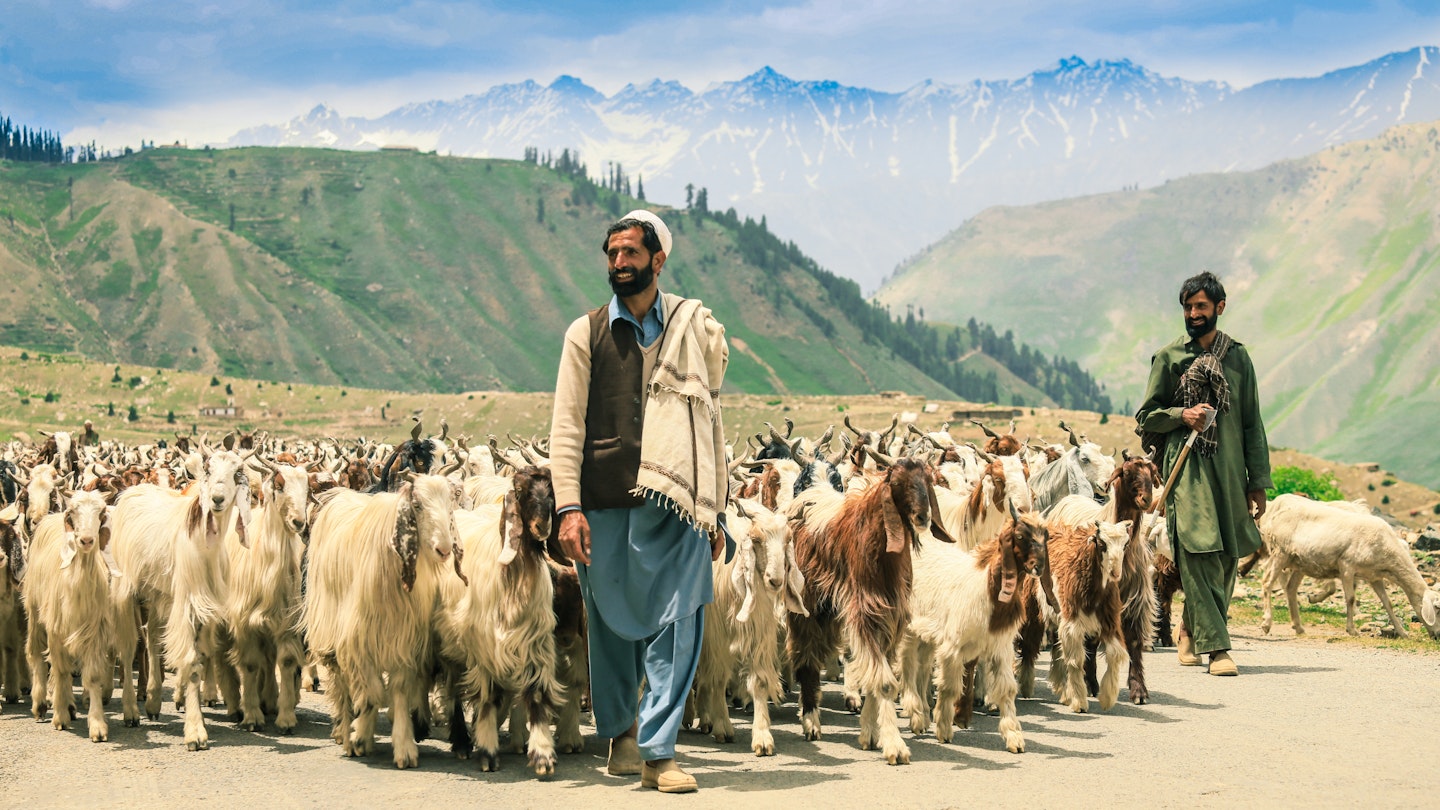
Pakistan offers amazing adventures but it pays to read up on the challenges © Dave Primov / Shutterstock
Pakistan is one of the world’s great surprises, with an incredible diversity of scenery – from the world’s biggest mountain glaciers to the sparkling waters of the Indus River – alongside some of the most beautiful forts, mosques and archaeological sites in the Subcontinent. It is the cultural bridge between India and Central Asia and home to some of the most hospitable people you’ll ever meet.
It would, however, be fair to say that Pakistan has a mixed reputation beyond its borders. The country is beset with economic, political and security problems, but much has changed security-wise in recent years. An incredible welcome is guaranteed here, but this is also a destination that requires a bit of research in order to travel with confidence. Start your planning with the following essential travel tips.

1. Choose the right season for the areas you are visiting
Travel in Pakistan is strongly affected by the seasons . The summer months of July and August are the best time to visit the high mountains of the Karakoram and Hindu Kush ranges in the north, but this is also the busiest time for domestic tourism and it’s incredibly hot elsewhere in the country. If you want to explore the center, south and west of the country, consider a visit in spring (April and May) or autumn (October and November), especially if you don’t plan on going trekking. October brings fabulous fall colors to places like the Hunza Valley, whereas winter (November to February) is the best time to explore central and southern Pakistan.
Festivals worth planning your trip around include the Shandur Polo Festival in the second weekend of July, held atop the mountain pass between Hunza and Chitral, and the Chilam Joshi spring festival in the Kalash Valley in mid-May.
2. You’ll probably need a visa and letter of invitation to visit Pakistan
Most foreigners need a visa to enter Pakistan but you can apply online through the immigration department’s slightly glitchy e-visa system . You will also need a letter of invitation from a local hotel, your Pakistani host or a Pakistani travel agent to secure a visa, so give yourself enough time to get this document in place. Even if you don't plan on taking a tour, travel agencies can provide a letter of invitation for a fee. Contact your local Pakistani embassy or high commission for the latest information.
3. Be prepared for some challenges if you travel during Ramadan
The Muslim fasting month of Ramadan brings a specific set of challenges for travelers. Most Pakistani Muslims avoid eating or drinking between dawn and dusk during this holy month, and most restaurants close during the day, with offices often working reduced hours. You’ll need to be fairly self-sufficient when it comes to food during daylight hours and you should avoid eating in public during the fasting period. This said, evenings are especially lively during Ramadan, as the devout break their daily fast with blowouts in local restaurants.
The dates for Ramadan shift annually according to the Islamic lunar calendar and sightings of the moon, and the festival moves forward by 11 days each year, relative to the Gregorian calendar; in 2024, the festival should start around 10 March.
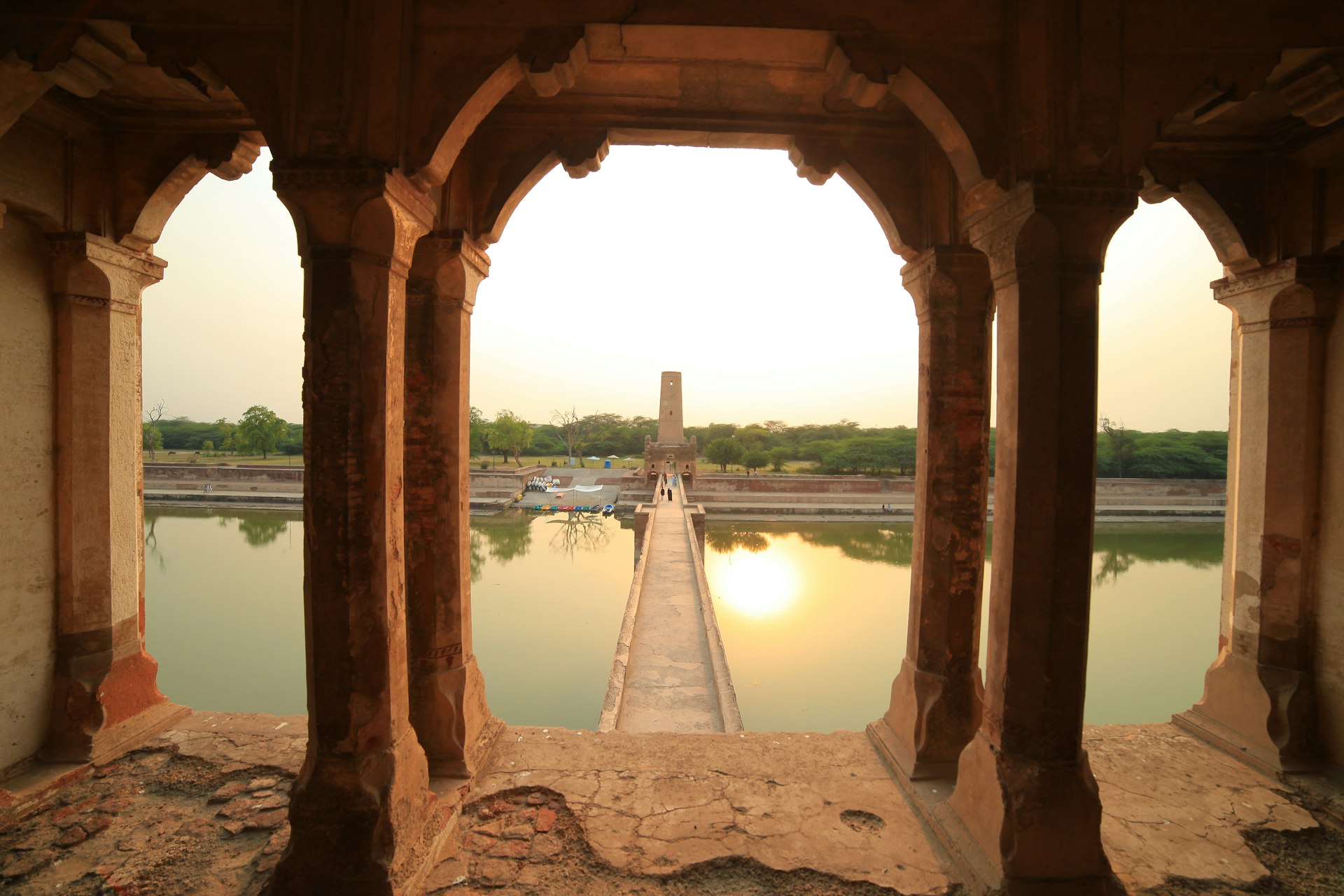
4. Get a Pakistani SIM card to use the local taxi apps
Public Wi-Fi is not all that common outside of larger cities in Pakistan, so it’s useful to bring an unlocked smartphone for mobile browsing. Buy a local SIM card from the main customer service center for your chosen operator, in whichever town you happen to be in. Travelers recommend Zong , Telenor or Jazz for central Pakistan, or the government-owned SCOM for the mountainous northern area of Gilgit-Baltistan .
With a local SIM and phone number, you should be able to use local taxi apps such as Uber and its local equivalent Careem , which will save you both time and money, compared to flagging down local taxis in big cities such as Islamabad and Lahore .
5. Bring plenty of photocopies of your passport
There are lots of checkpoints in Pakistan where you'll need to show your identity documents, so bring lots of photocopies of your passport’s information pages and Pakistan visa, and always travel with the original passport on your person. You’ll find yourself handing over these copies regularly on long-distance road trips, including when traveling on the Karakoram Highway .
6. Enjoy the local hospitality (but don’t abuse it)
Culture and customs can vary widely as you move from region to region in Pakistan but in general, you’ll find most Pakistanis to be extremely friendly and hospitable. Conversations, cups of chai and even dinner invitations flow easily, and you can expect to participate in hundreds of selfies.
Hospitality is so integral to Pakistani culture that many locals feel obliged to offer to pay for a foreigner’s meal or bus tickets, even if money is short. You may have to turn down these invitations multiple times to avoid burdening anyone unnecessarily. If you do share a meal in Pakistan be sure to pass and accept food with your right hand only; the left hand should not be used for eating or shaking hands.
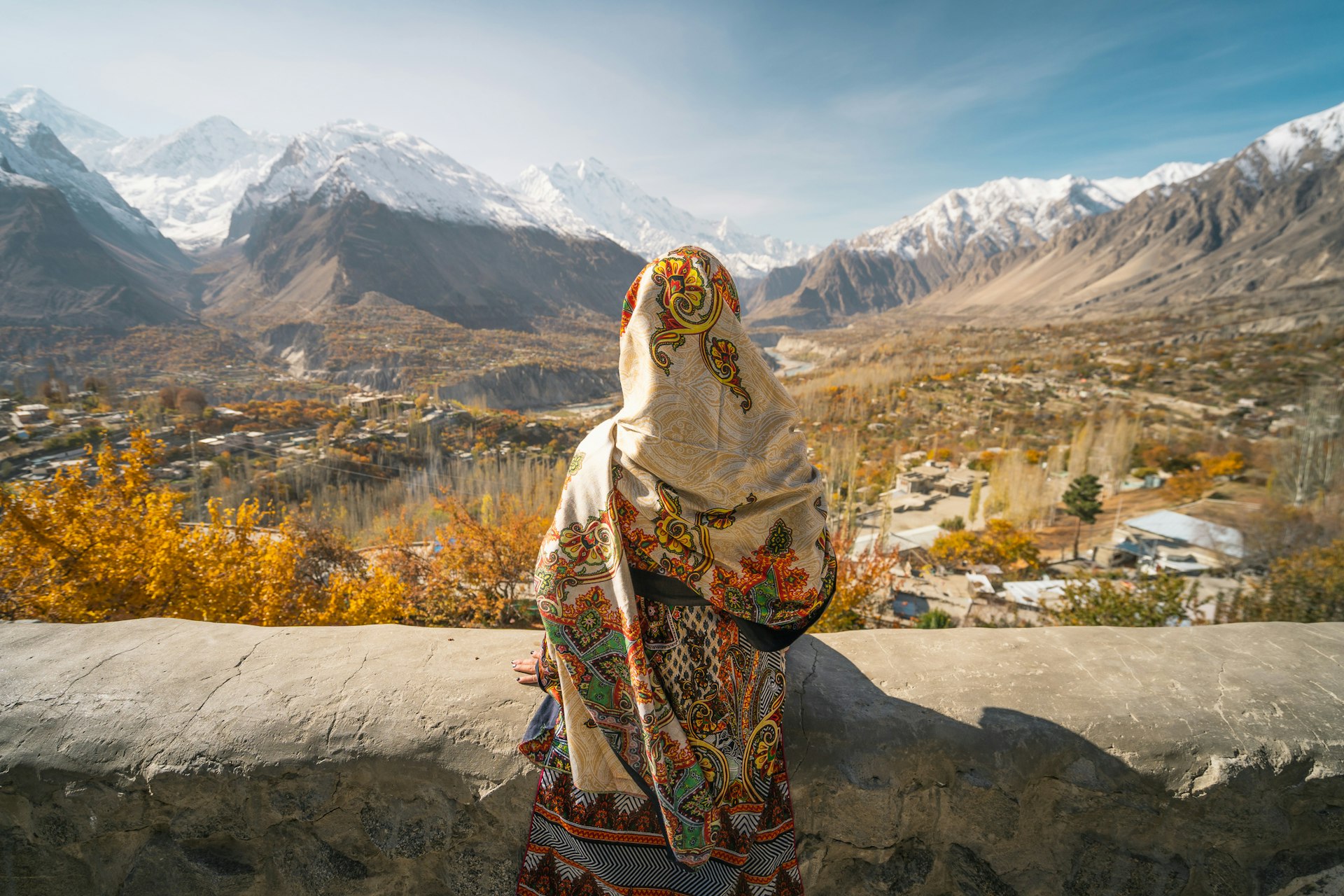
7. Women travelers might face some challenges in Pakistan
For the most part, Pakistan is a conservative, male-dominated society, and this can pose some challenges for female travelers. Women and men don’t mix much in public, and women generally sit in segregated areas on public buses and trains and, often, in restaurants. Attitudes towards foreign women can be protective and curious but women traveling alone may face some suspicion, and sexual harassment can sometimes be a risk in crowds. Special rules for women also apply at some religious sites.
For solo women travelers traveling through Pakistan, it helps to already have some experience of travel in other Islamic countries. Women traveling with a male companion generally face fewer obstacles. On the plus side, women travelers can gain insights into family dynamics and the lives of Pakistani women, which are completely off-limits to male travelers. And in some situations, foreign women may have unique access to both the male and female worlds.
8. Invest in a shalwar kameez to travel like a local
Pakistan’s national dress is the shalwar kameez , a garnet resembling a long shirt worn over wide, baggy trousers, popular with both men and women. It's worth investing in a set if you are going to be traveling for any length of time in Pakistan. The shalwar kameez is supremely practical and comfortable in this climate – you’ll also blend in nicely with the crowd, and locals will respect you for sharing in their culture. Women should also add a dupatta scarf to cover their hair when visiting mosques and other religious sites.
9. Dial down public displays of affection
Many Pakistanis are socially conservative, and public displays of affection between men and women – including kissing, touching and even holding hands in public – are frowned on. Attitudes towards LGBTIQ+ people can also be quite negative, and same-sex relationships are illegal, so Pakistan is not a good place for openly LGBTIQ+ people to travel . It is not unusual for Pakistani men to hold hands or drape arms around each other, but this is generally platonic.
10. Treat bargaining as a lighthearted sport
Haggling is acceptable, commonplace and often necessary in Pakistan, but it is best approached as a lighthearted social exchange rather than a life-or-death struggle, as some travelers treat it when traveling in Asia. The goal is for both purchaser and seller to walk away happy.
When bargaining, respond to the first price quoted with a lower offer, then work back and forth until you reach a price you can both agree on. If you can afford it, avoid haggling over small sums – local people are often poorly paid and financially insecure, and overpaying by a few rupees won’t make a big dent in your wallet.
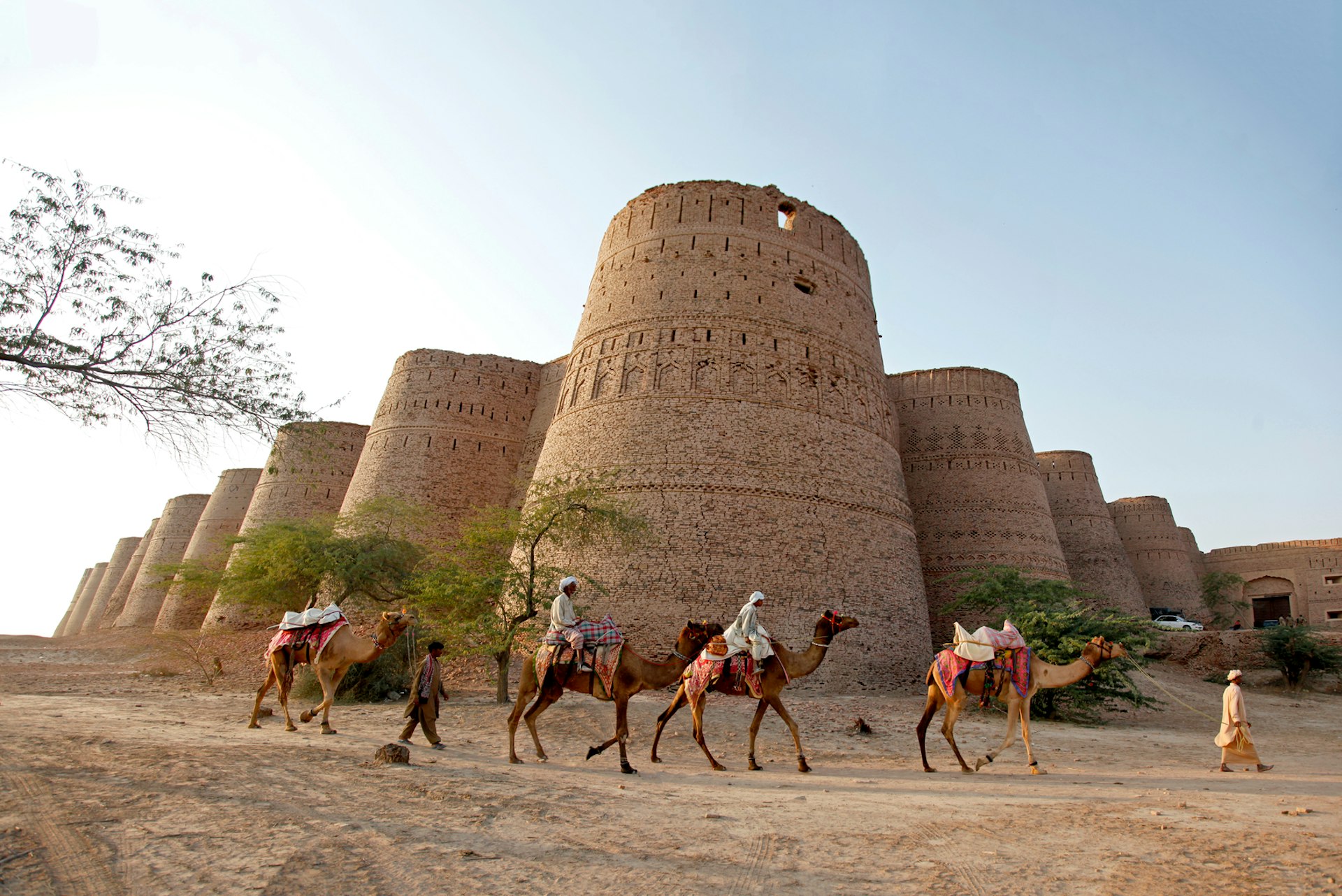
11. Be aware of the no-go areas
The security situation can vary widely as you travel around Pakistan. Potentially dicey areas include parts of rural Sindh, some neighborhoods in Karachi , the area of Indus Kohistan close to Abbottabad (where Osama Bin Laden lived in hiding until 2011), parts of Khyber-Pakhtunkhwa province bordering Afghanistan , and all of Baluchistan and Azad Kashmir provinces.
In general, you are unlikely to stumble into a danger zone because foreigners require a No Objection Certificate (NOC) to visit such places, and you won’t be given one of these without excellent local contacts. The safest parts of the country are central Punjab Province and the area north of Gilgit, extending as far as the Chinese border along the Karakoram Highway . Check out the latest travel advisory information from your home government before you travel.
While the risk is small, terrorist attacks and kidnappings do take place in Pakistan, and street crime can be an issue in parts of Karachi. Stay alert, exercise caution, and heed local advice on problem areas. Be aware that Sufi and Shia shrines are sometimes targeted by extremists, so visiting these locations can bring a slightly elevated risk.
12. Don’t panic if you get an armed escort
The Pakistani government is keen to protect the nation’s tourism industry, and officials sometimes insist that tourists take an armed guard to visit certain locations. You don’t have to pay for these guards, but the use of their services is mandatory.
Some travelers find the guards somewhat constraining but their presence is usually just a precaution. You may be given a police escort in places such as Swat, the Kalash Valley and the scenic Fairy Meadows hiking area (on the northern flanks of Nanga Parbat peak).
13. Get travel insurance (and read the small print)
Good travel insurance is important for travel to Pakistan, but be aware that most policies won’t cover you for areas where your home government advises "against all travel." For example, in 2023, the British Foreign & Commonwealth Office was advising against all travel to Swat and Peshawar, amongst other destinations. Check the latest government travel advisories for up-to-date information and plan your itinerary accordingly.
14. Give some thought to potential problems before you come
Beyond security issues, natural disasters such as flooding and earthquakes are unfortunately common at times in Pakistan, while power cuts are a smaller but more frequent occurrence. Monitor the local and international media for news on problem areas, and if you get caught in a natural disaster, follow the guidance of the authorities.
In terms of personal health, intestinal problems are the most common complaints among foreign tourists; the two golden rules are don’t drink the tap water and be wary of pre-cooked food. Eating from busy stalls and restaurants where food is freshly cooked is the way to go.
Explore related stories

Destination Practicalities
Oct 15, 2023 • 3 min read
Here’s our guide to navigating the entry requirements for visiting Sri Lanka as a tourist, with information on visa types, costs and how to apply for one.
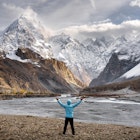
Sep 4, 2023 • 6 min read
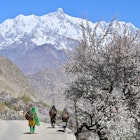
Aug 24, 2023 • 6 min read

Aug 13, 2023 • 7 min read
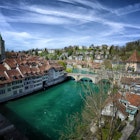
Feb 8, 2020 • 2 min read
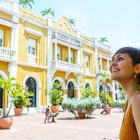
Dec 20, 2023 • 7 min read
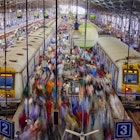
Dec 16, 2023 • 12 min read
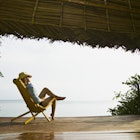
Dec 5, 2023 • 4 min read
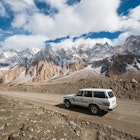
Sep 3, 2023 • 10 min read
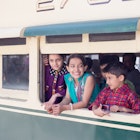
Aug 30, 2023 • 12 min read
Solo female travel anywhere and everywhere.
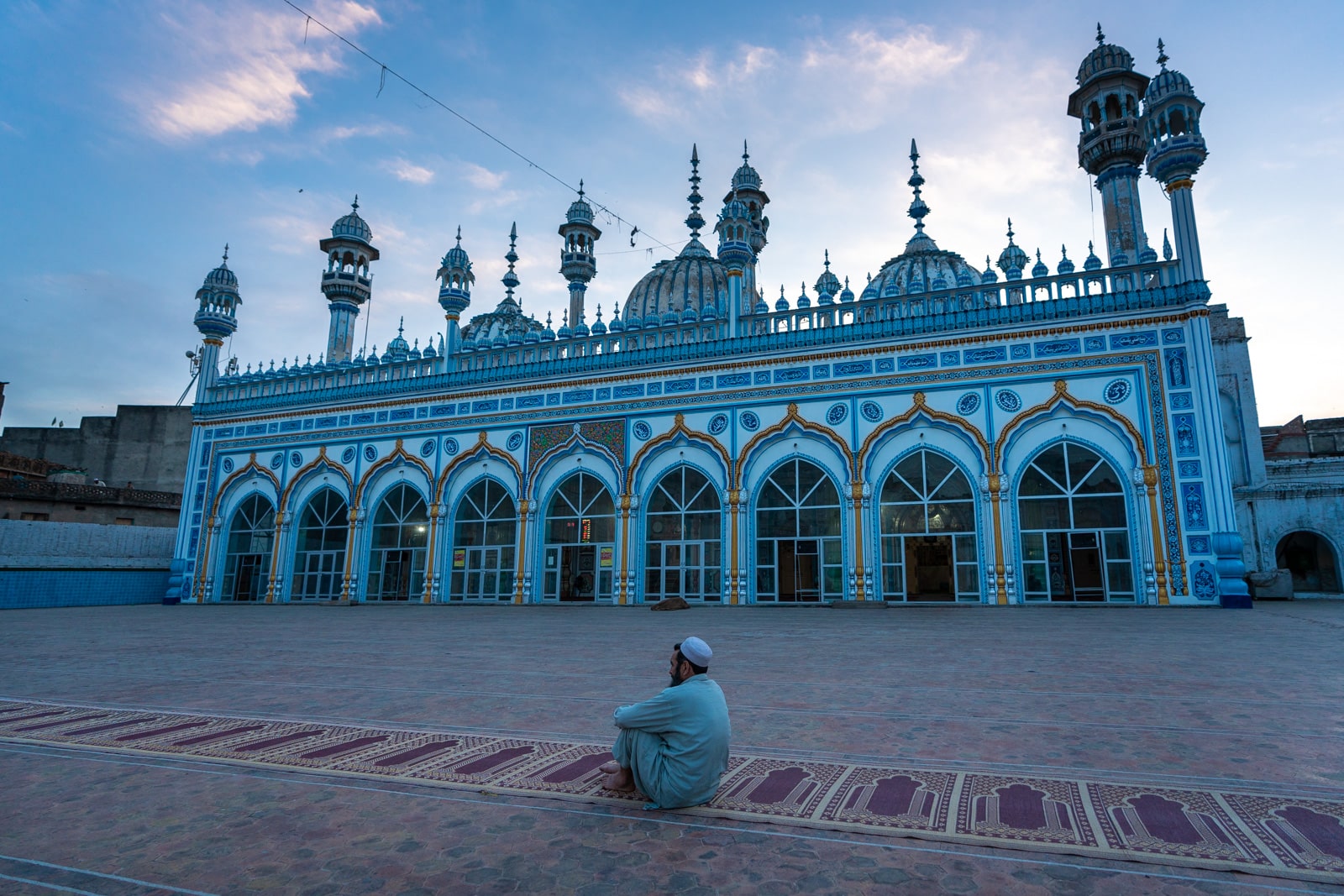
Pakistan travel guide: everything to know before you go
Updated in 2024: After years of both independently traveling in Pakistan and later running tours there, it’s safe to say I know a lot about travel in Pakistan. Here’s my complete Pakistan travel guide with information on visas, transportation, costs, and everything else you need to know about travel in Pakistan.
Curious about traveling to Pakistan but nervous about going alone? Check out my tours: I run both women’s tours and biker tours in Pakistan.
Jaw-dropping nature, diverse cultures, and delicious food—these are but a few of the things you’ll experience when you visit Pakistan. Most importantly, it’s home to the most hospitable people I’ve met in my travels. It’s no wonder more and more people want to travel to Pakistan!
However, Pakistan ain’t as easy to travel in as some will have you believe . But no worries, I got you. This guide was created after more than six visits and almost a year of travel in Pakistan. I have visited Pakistan more than any other travel blogger and traveled to Pakistan both with friends and by myself. Keep reading to learn everything you need to know about travel in Pakistan.
Pakistan travel guide: index
- Pakistan basics
- Languages of Pakistan
- Regions of Pakistan
- Culture in Pakistan
- Gender in Pakistan
- Drinking and drugs
- Religion and Pakistan
- Pakistani food
- Money in Pakistan
- Visas for Pakistan
- Entering and exiting Pakistan
- Accommodation in Pakistan
- Transportation in Pakistan
- Safety in Pakistan
- SIM cards and WiFi
- Responsible tourism in Pakistan
- Resources for Pakistan travel
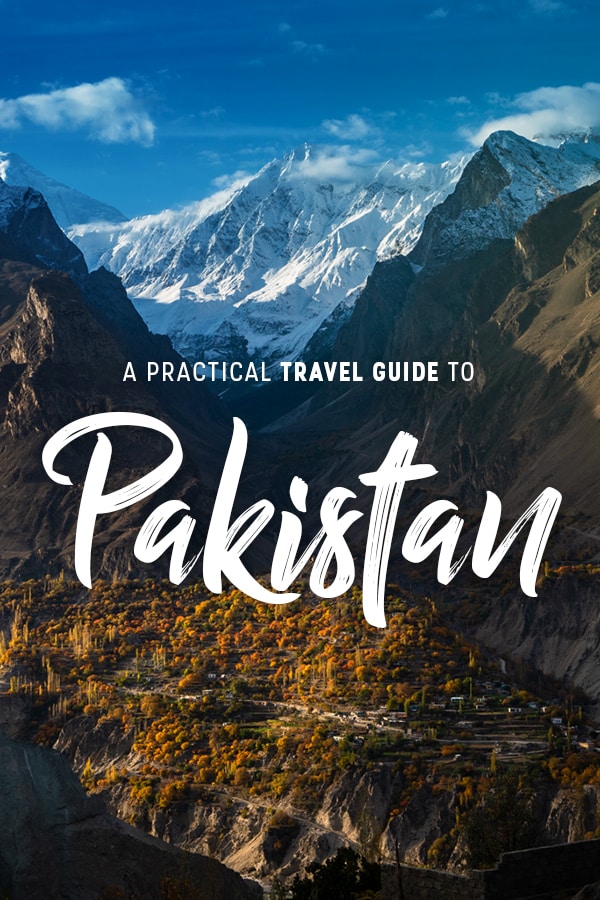
Pakistan travel guide: the basics
Pakistan is officially called “The Islamic Republic of Pakistan.” A populous country in South Asia—no, it’s not in the Middle East—with more than 200 million people, it’s the 6th most populous country in the world. TL;DR: Lots and lots of people. Everywhere.
Pakistan was founded on the 14th of August 1947 after an event known as Partition : when British India created the modern states of India and Pakistan. The event was bloody, its ramifications still visible today. The country became an Islamic Republic in 1956. During partition, Pakistan was divided into West and East Pakistan. In 1971 East Pakistan became Bangladesh after another bloody war for independence .
Although Pakistan is a young country, its history is ancient. Ruins of one of the oldest civilizations in the world, the Indus Valley Civilization , lie in southern Pakistan. Multiple conquerors and civilizations took hold in parts of modern-day Pakistan, including Alexander the Great, the Delhi Sultanate, the Mughal Empire, and the British Raj.
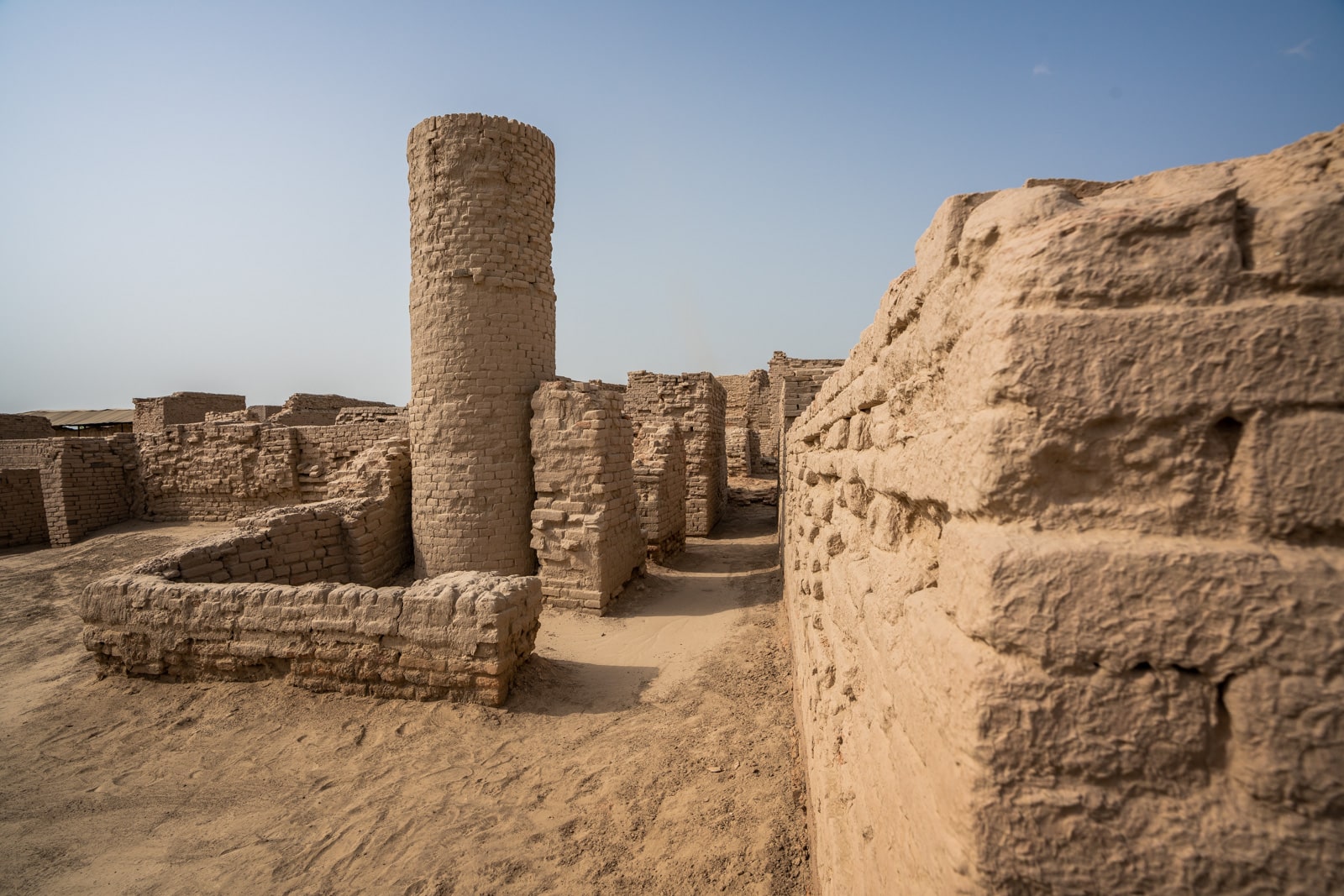
The ruins of Moenjo Daro in Sindh province are from the Indus Valley civilization, the oldest known civilization
Pakistan’s recent history is marred with conflict, both internal and external, most notably with India. It’s struggled with military coups, terrorist attacks, war, and secessionist tensions. Its army has strengthened throughout the years as a result; it’s now a nuclear power and has the sixth-largest standing armed forces in the world.
I could go into it more, but you can only cover so much in one Pakistan travel guide! If you want to get more in-depth with Pakistan’s history, I highly recommend getting a copy of Pakistan Traveller – it’s the best Pakistan travel guide book on the market.
Pakistan travel guide: Language in Pakistan
Myriad languages are spoken in Pakistan. Most people speak two or three languages. At least!
Urdu is Pakistan’s national language, as well as the language of officialdom together with English. Most middle and upper-class Pakistanis will speak (some) English. It’s rare to find a place where absolutely no one speaks English. However, it’s always good to pick up a phrase or two in Urdu before you visit Pakistan. I highly recommend Pimsleur for learning language basics .
Besides the two official languages, there are many local languages: Pashto, Sindhi, Balochi, Punjabi, Potohari, Shina, Wakhi, Burushaski… the list goes on! Every province has its own regional language, such as the aforementioned Punjabi and Sindhi. In major cities people mostly speak Urdu, but in towns and villages local languages reign supreme.
Urdu basics
- Salaamu aleikum: Hello
- Walaykum asalaam: Hello (in response)
- Shukriya: Thank you
- Kya haal hai?: How are you?
- Mai thik hoon: I am fine.
- Aap ka naam kya hai?: What is your name?
- Mera naam Alex hai: My name is Alex.
- … kaha hai?: Where is… ?
- Kitnay paisa?: How much?
- Ji / haan: Yes/yeah
- Jao: Go away
- Nehi chahiye: I don’t need it
- Angrezi ata/ati?: Do you know English?
Interested in learning more conversational Urdu? I’ve been taking virtual lessons with a teacher, Naveed Rehman, for several years now (on and off). He’s very patient, excellent at explaining grammar, and focuses on practical conversational Urdu rather than rote memorization. I highly recommend his online Urdu classes —they’re quite affordable by Western standards, so they’re well worth a try!
Pakistan travel guide: Regions of Pakistan
The country of Pakistan is divided into four provinces and three territories, each with its own distinct culture and flavor:
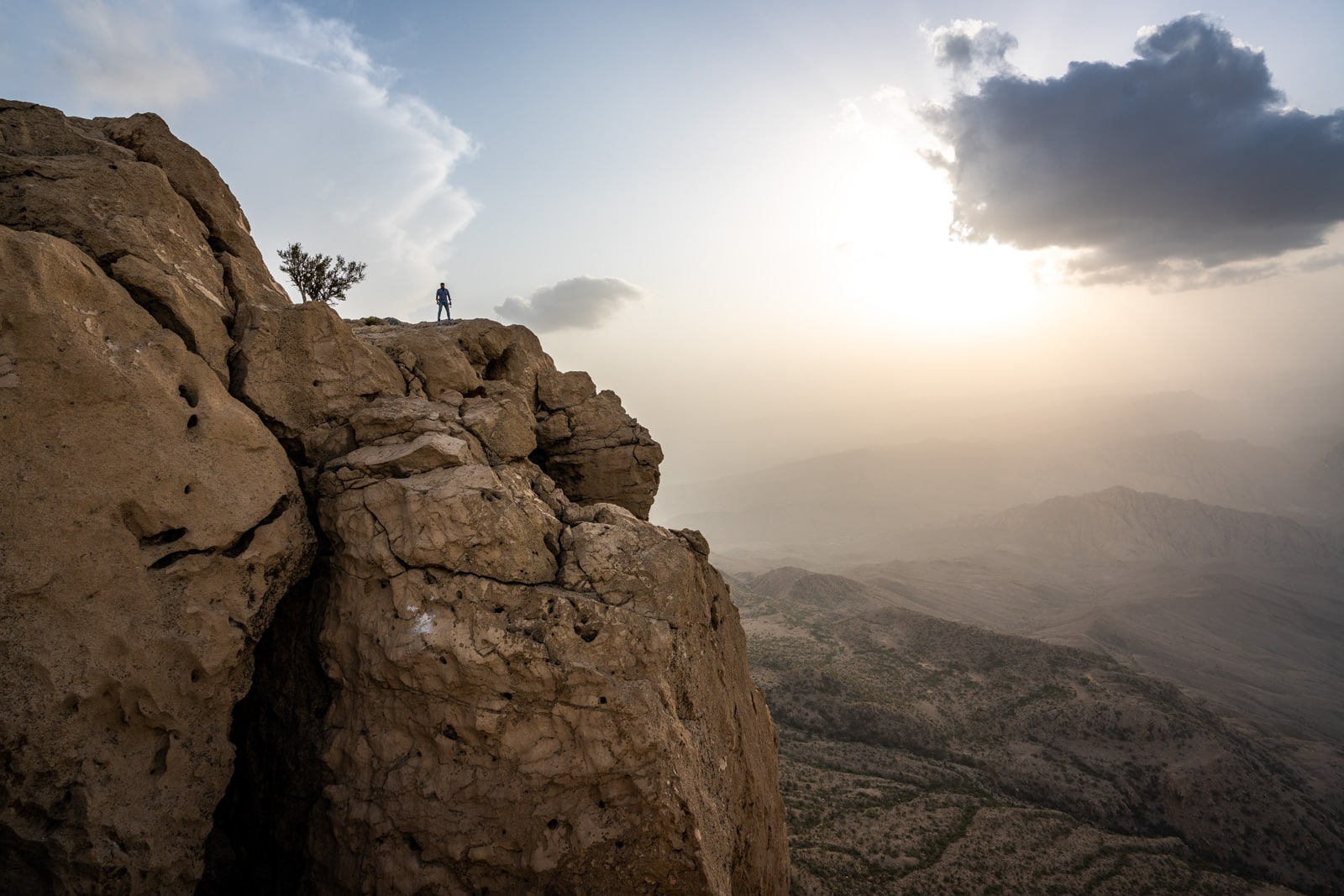
Sunset at Gorakh Hill in Sindh
Sindh (province)
Major cities/destinations: Karachi, Hyderabad, Sehwan Sharif
The southernmost province of Pakistan is home to its biggest city, Karachi. But venture out into the rural areas, known as “interior Sindh”, and you’ll find a mystic realm of moody deserts, Sufi shrines, and abandoned forts. Don’t miss my guide to traveling in Sindh.
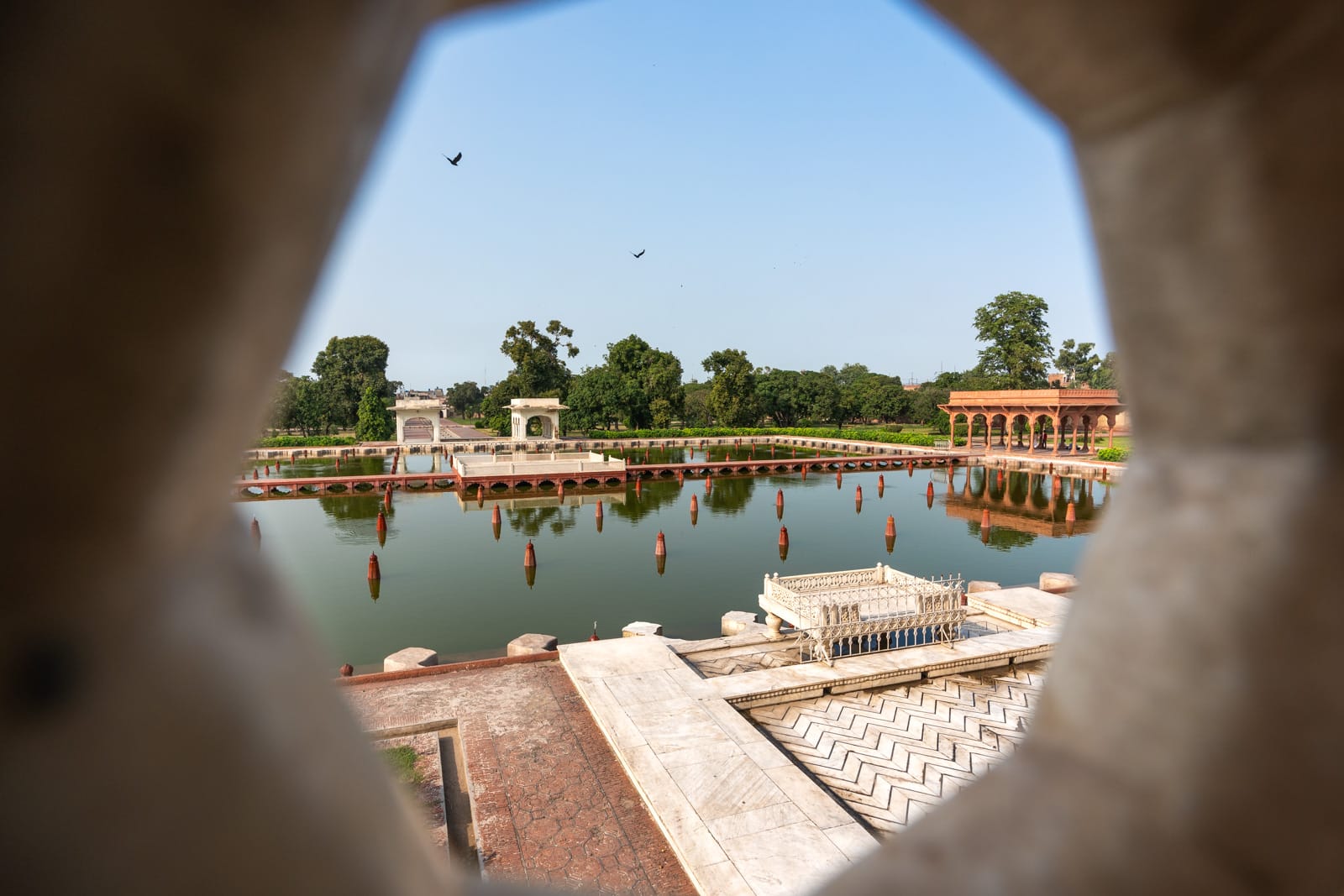
Shalimar Bagh (Shalimar Gardens) in Lahore, Punjab
Punjab (province)
Major cities/destinations: Lahore, Rawalpindi, Multan
Pakistan’s wealthiest province sits in the middle of the country. Though vast fields of wheat and other crops make stereotypical Punjabi landscapes, there are also plenty of massive Mughal relics and nature tinged with green to keep travelers busy. It’s also home to my absolute favorite city in Pakistan, Lahore .
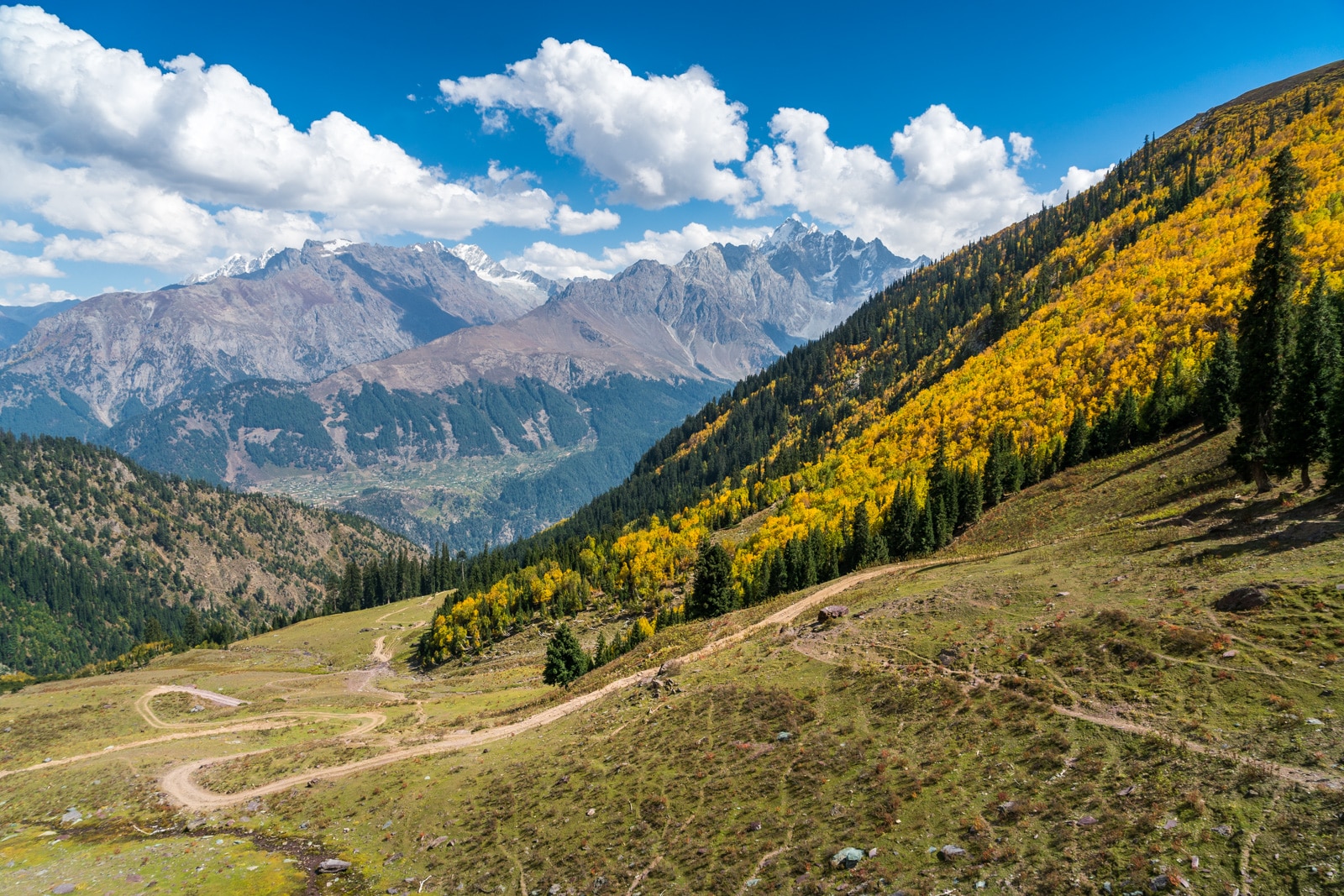
Swat Valley, Khyber Pakhtunkhwa
Khyber Pakhtunkhwa (province)
Major cities/destinations: Peshawar, Chitral, Kalash Valleys
Far to the west of the country, and now including what was once known as the Federally Administered Tribal Areas (FATA), this province borders Afghanistan. Home primarily to the Pakhtun (Pashtun) people , many parts of this province are evocative of traveling Afghanistan . Some parts are off-limits—especially the south and regions along the Afghan border—but natural areas such as Swat Valley and the Kalash Valleys are popular… for good reason!
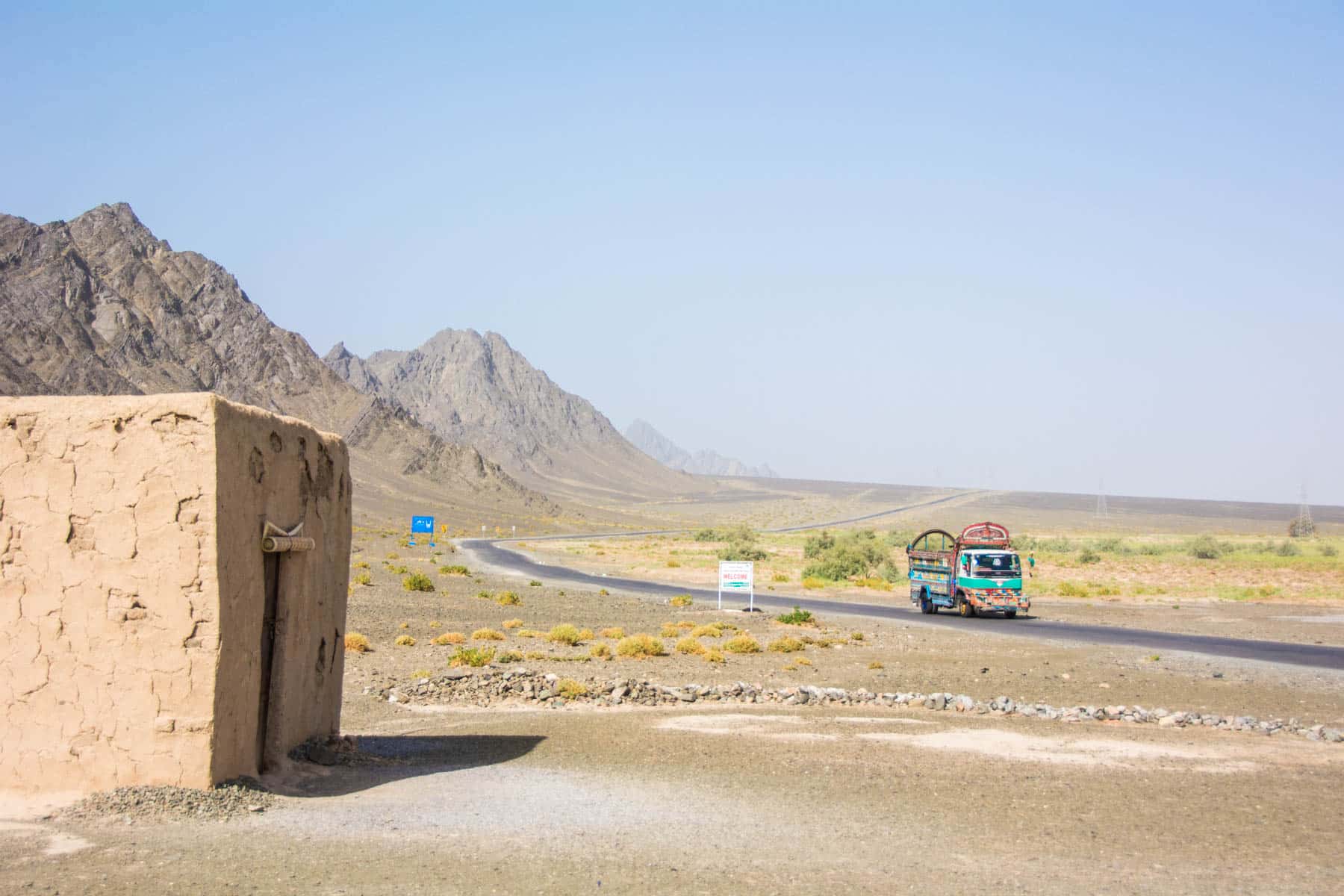
Lonely road in Balochistan province
Balochistan (province)
Major cities/destinations: Quetta, Gwadar, Hingol National Park, Makran Coastal Highway
Bordering Iran and Afghanistan, the country’s largest province is also one of the least traveled. Home to deserts, dusty mountains, and azure coastlines, this province is unfortunately off-limits to foreign travelers aside from those doing the Iran-Pakistan overland border crossing .
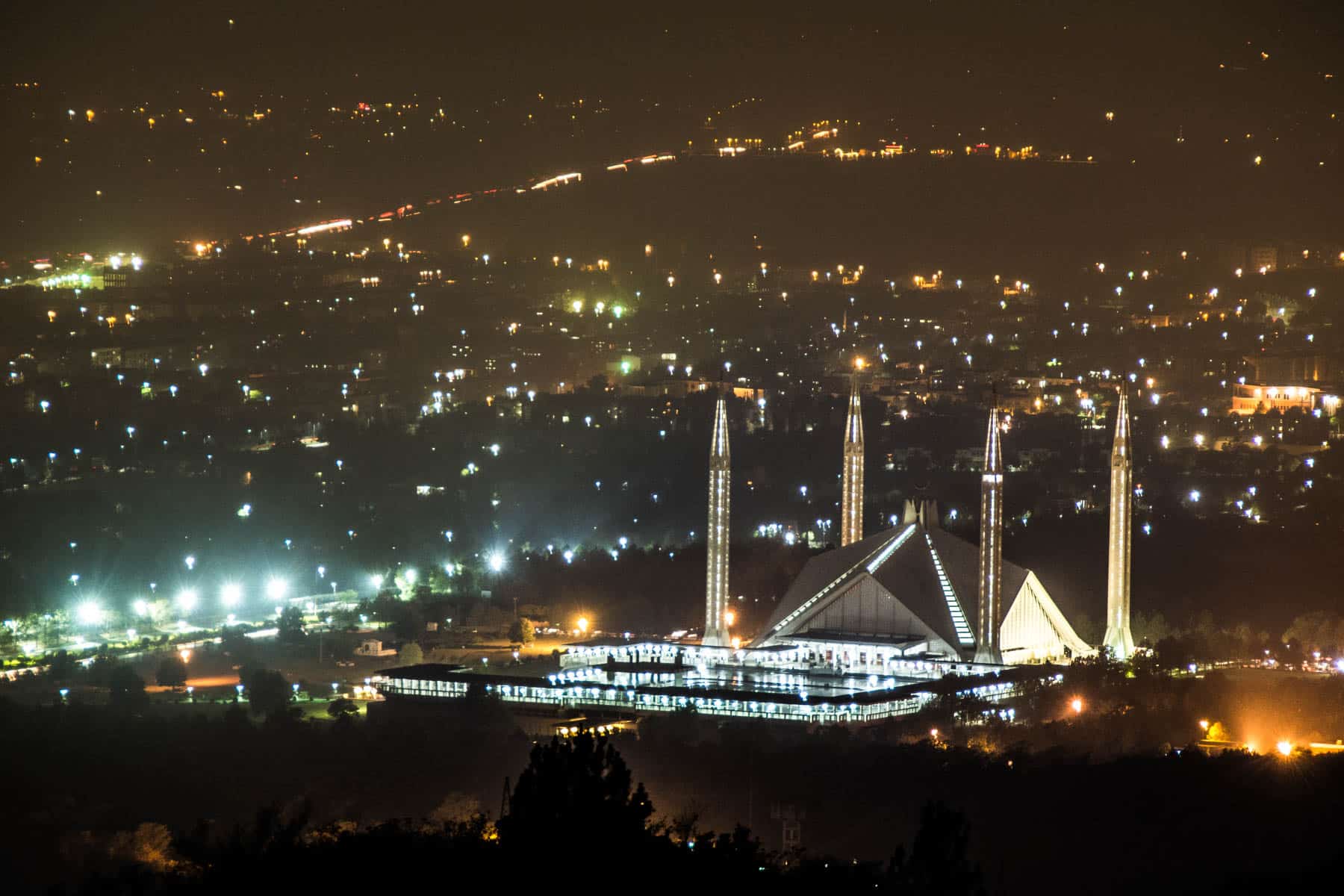
Islamabad, Pakistan from above
Islamabad capital territory
The country’s capital is also its own territory. Many tourists start their Pakistan travels in Islamabad, but I’ll be honest with you: I’m not the biggest fan. Though there are many things to do in Islamabad , the capital is far from representative of the rest of the country, and is on the verge of boring much of the time. Still, it’s a comfortable and relatively developed place to rest, relax, and pick up some necessities while traveling in Pakistan.
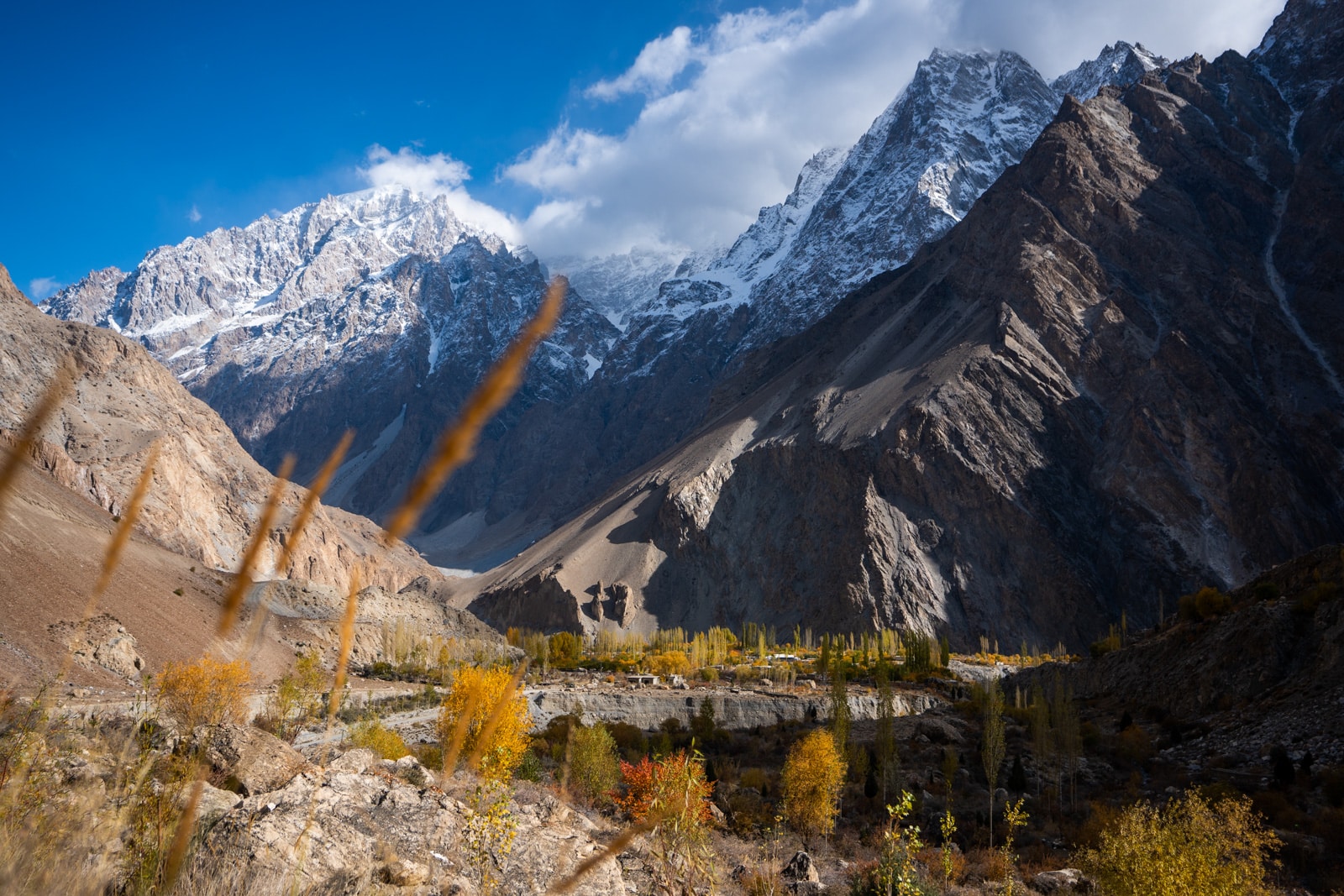
Autumn in Khyber village, Gilgit Baltistan
Gilgit Baltistan (territory)
Major cities/destinations: Gilgit, Central Hunza (Karimabad), Passu
When people come to Pakistan looking for mountains, this is where they end up. Also known as “Northern Pakistan”, the vast territory of Gilgit Baltistan is home to three major mountain ranges—Himalayas, Karakoram, and the Hindu Kush—as well as several of the world’s tallest mountains (K2, Nanga Parbat, and Rakaposhi). It’s by far the calmest and easiest to travel of all the country’s provinces, especially for female travelers . If you’re in search of nature, you’re probably heading north to Gilgit Baltistan.
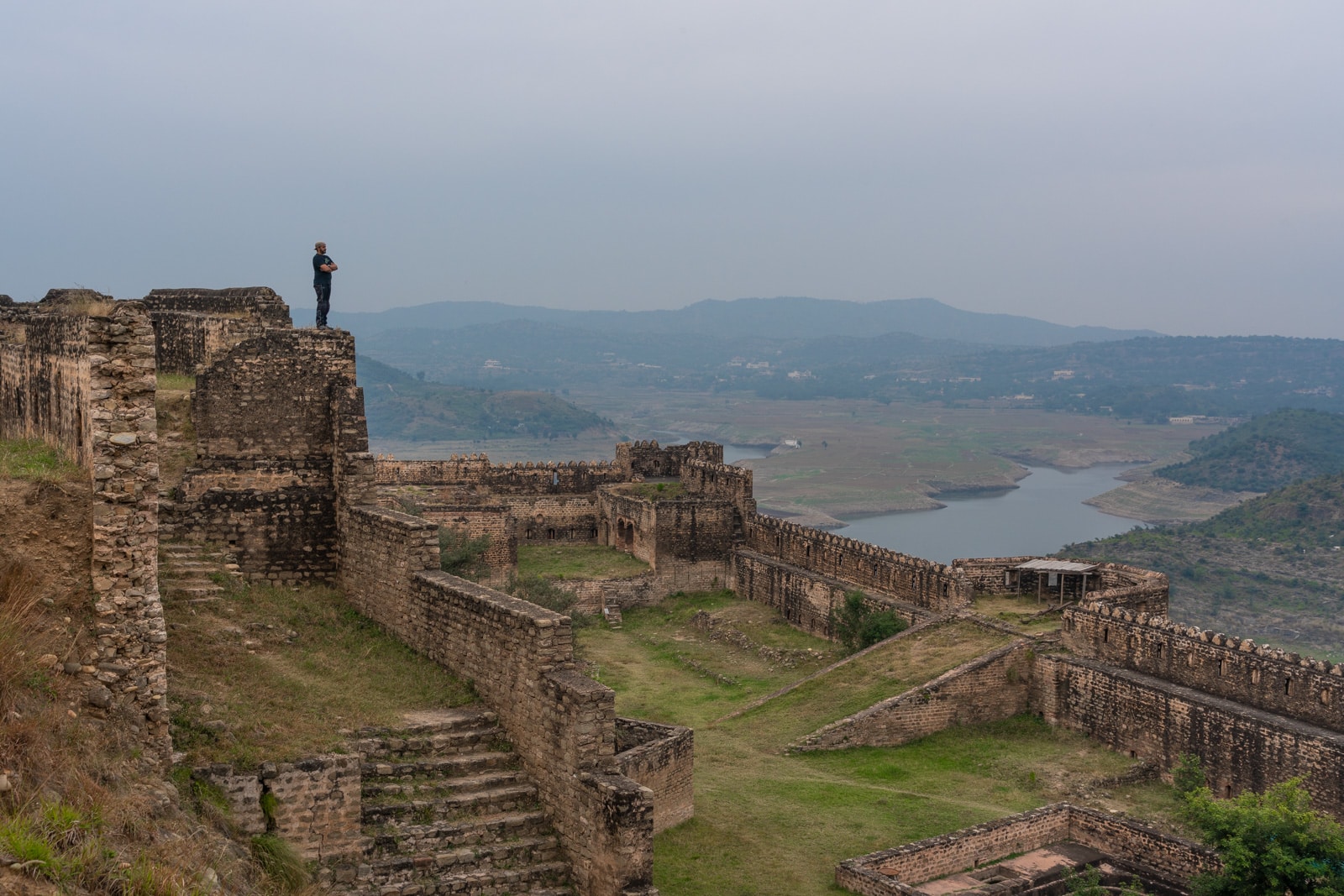
Ramkot Fort in Azad Kashmir
Azad Kashmir (territory)
Major cities/destinations: Muzaffarabad, Neelum Valley
This narrow territory to the east of Pakistan on the border with India has been disputed ever since Partition, the dividing of India and Pakistan in 1947. Tensions occasionally flare up between the Pakistani military and the Indian military, and so the territory was off-limits to foreign travelers for a long time. As of 2019, the territory has opened up slightly, though foreigners are still not allowed to go within 10 km of the border, known as the Line of Control (LOC). However, you can at least visit Muzaffarabad, Mirpur, and their surrounding areas… though security forces might hassle you a bit.
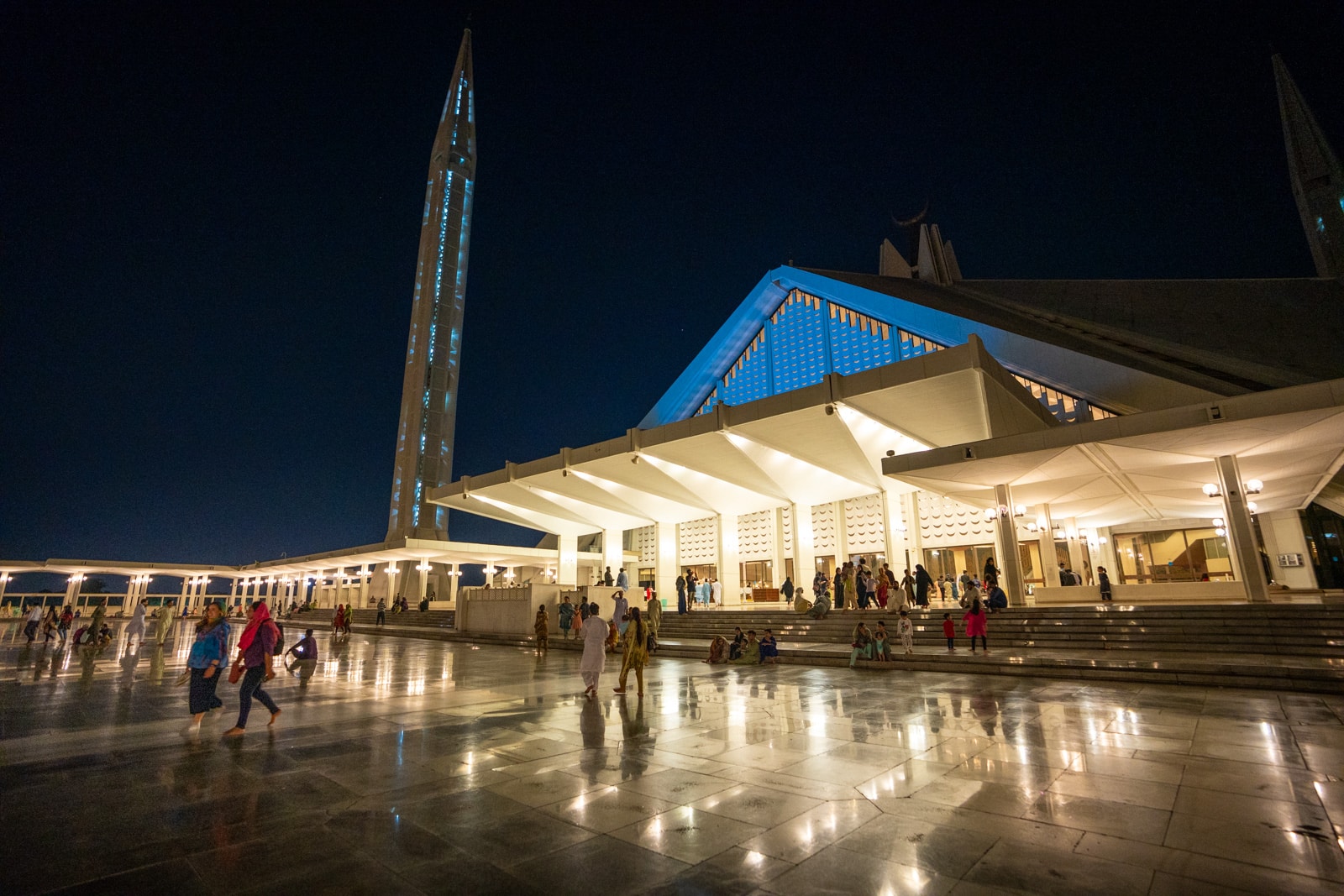
People enjoying the night air at Faisal Mosque in Islamabad, Pakistan.
Pakistan travel guide: Culture in Pakistan
Pakistan’s culture is varied and vibrant, albeit very conservative. Religion dictates and influences culture at almost every level. Keep that in mind and tread carefully when traveling to Pakistan. Keep this Pakistan travel guide handy to help you avoid any cultural faux pas situations.
Due to its diversity, it’s difficult to make generalizations about Pakistani culture… but try, I shall! This is a Pakistan travel guide, after all. Here are some cultural nuances travelers should be aware of:
Hospitality
Pakistan’s hospitality is renowned. In Pakistan, guests are a gift from God, and many people are honored to treat them as such. During my travels through Pakistan, people have…
- Invited me to stay in their homes despite not knowing me at all.
- Slept on the floor so I could sleep in their bed.
- Fed me a million and one times, even when they were fasting during Ramadan.
- Taken the time to show me around their cities, villages, regions.
- Gifted me everything from clothing to food to souvenirs.
- … and then some.
The hospitality is incredible and continues to amaze me even after repeat visits to the country.
However, in recent times—and due to some careless influencers —I feel some travelers are interpreting this hospitality the wrong way.
Pakistan is NOT a place to go because ~*everything is freeeee!!!*~. By all means, enjoy their hospitality—I sure do—but don’t take advantage of it. Give back where you can.
You can give people small tips (maybe 20 to 50 rupees) if they do something to help you out, or if they’re visibly poor but still feed you or give you things. More if they help you a lot over a period of time. Help out around the house, or buy gifts of fruits, sweets, or nuts (called “dried fruits” in Pakistan). Meat is also a good gift for poorer people in villages. Bring small gifts from your own country or home for people who host you (think postcards, sweets, trinkets, etc.).
Sometimes people will not accept, but it doesn’t hurt to offer. If it’s a matter of pride over money, you can always give a little financial gift to the kids, or leave money somewhere in their house where they’ll find it.
TL;DR: don’t be a mooch. Pakistani hospitality is something to appreciate and learn from, not take advantage of. Enjoy, then pay it forward!
The Pakistani mindset
Let me preface this by saying Pakistanis are the most hospitable people I’ve met in my travels (shout out to Iranians and Bangladeshis as runners ups).
Pakistanis make you feel wholly welcome and are the country’s greatest asset. Some of the best friends from my travels are Pakistani. I’m not sure there’s a country where it’s easier to meet and interact with locals than Pakistan.
The flip side: Pakistanis can be difficult people to deal with.
Because the country is conservative and religiously homogenous ( about 97% of the population is Muslim ), I’ve found people can be very intolerant. There is a way to do and think about things in Pakistan, and those who do or believe otherwise are often met with opposition. Though many people harbor “alternative” opinions, they are often hesitant to speak them unless in close company. People are not used to differing opinions.
Pakistanis also do not handle criticism well. I knew this, but had a nice reminder (translation: aggressive awakening) of this inability when I posted a critical video about Pakistan’s tourism scene this year. I had to field hate for weeks on end despite constructive intentions.
Don’t let me put you off Pakistan and its people; my point is that you should be very cautious when speaking about sensitive subjects and be careful to respect Pakistan’s culture. By all means discuss, but choose your battles wisely.
The rest of this guide is meant to help you get a grasp on what is and is not okay in Pakistan, and how to act once there. Read through, and you won’t need to worry about clashing with locals. As I said, Pakistan is a brilliant country for adventurous travelers… so long as you respect local culture.
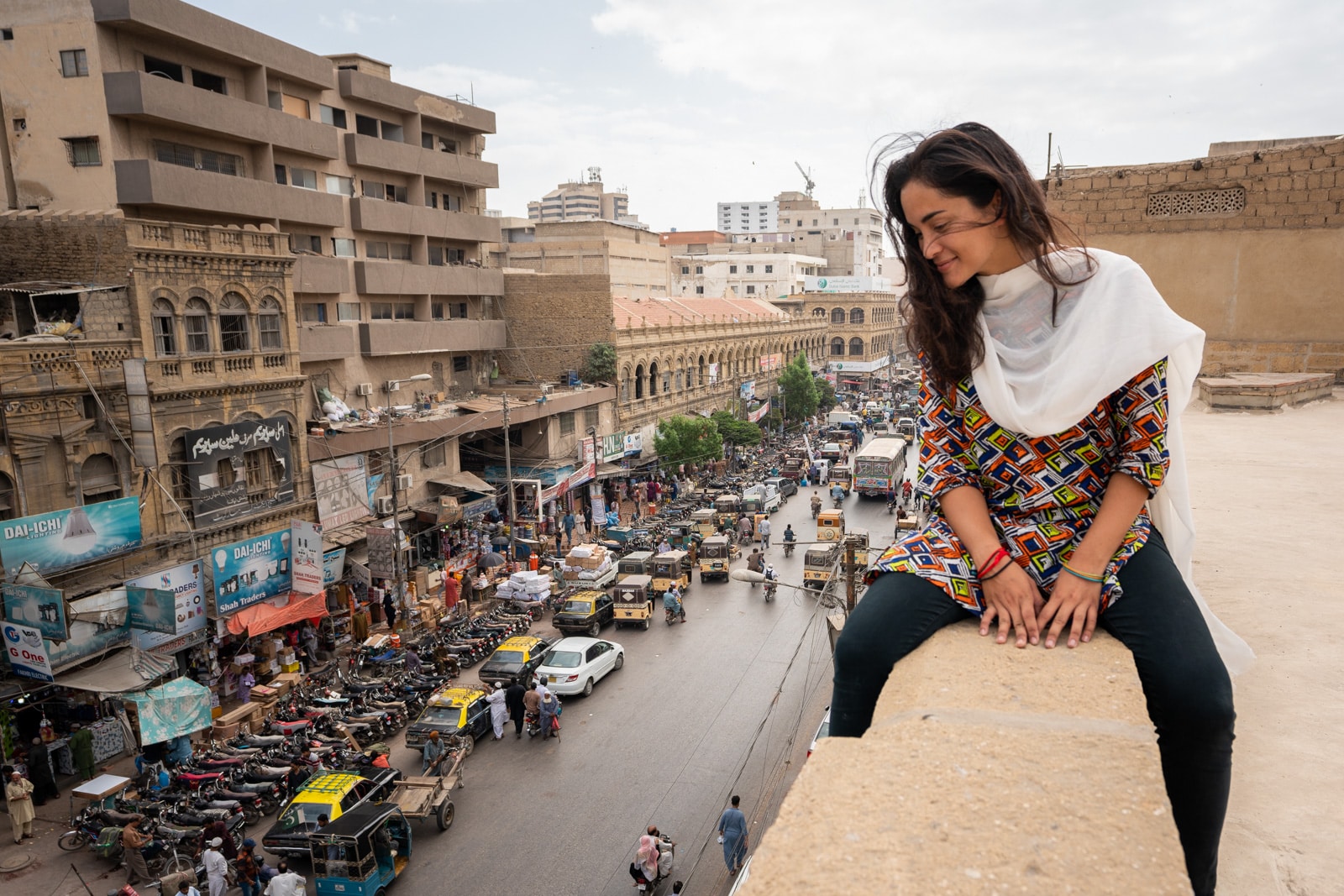
Overlooking the streets of Karachi in standard wear – kurta, jeans, and a dupatta (scarf)
People who want to travel to Pakistan often ask me about the types of clothes they have to wear. Although dress codes are less strict than they used to be, it’s best to come prepared when you visit Pakistan.
There’s no official rule about what to wear ( unlike Iran ), so long as you’re somewhat modest.
If you want to wear “western” clothes such as t-shirts and jeans, go ahead; many people wear western clothes in cities, especially in wealthy areas such as malls and Defence neighborhoods. Gilgit Baltistan sees plenty of trekkers wandering about in western outdoor attire.
Women: Pakistan is a very conservative country; unless you’re in a liberal/wealthy part of a major city, I recommend dressing modestly. That means long pants and a loose shirt or dress that ideally covers your bum. Although headscarves aren’t mandatory, it pays to have one on you for entering mosques.
The local pant/shirt combination, salwar kameez , is immensely comfortable and colorful. You can pick them up in bazaars and malls throughout Pakistan—locals will appreciate it!
Men: Shorts are okay, but you won’t see many locals wearing them, and they’re not allowed in mosques. In general, it pays to dress modestly—no tank tops or shorts. Again, salwar kameez is recommended.
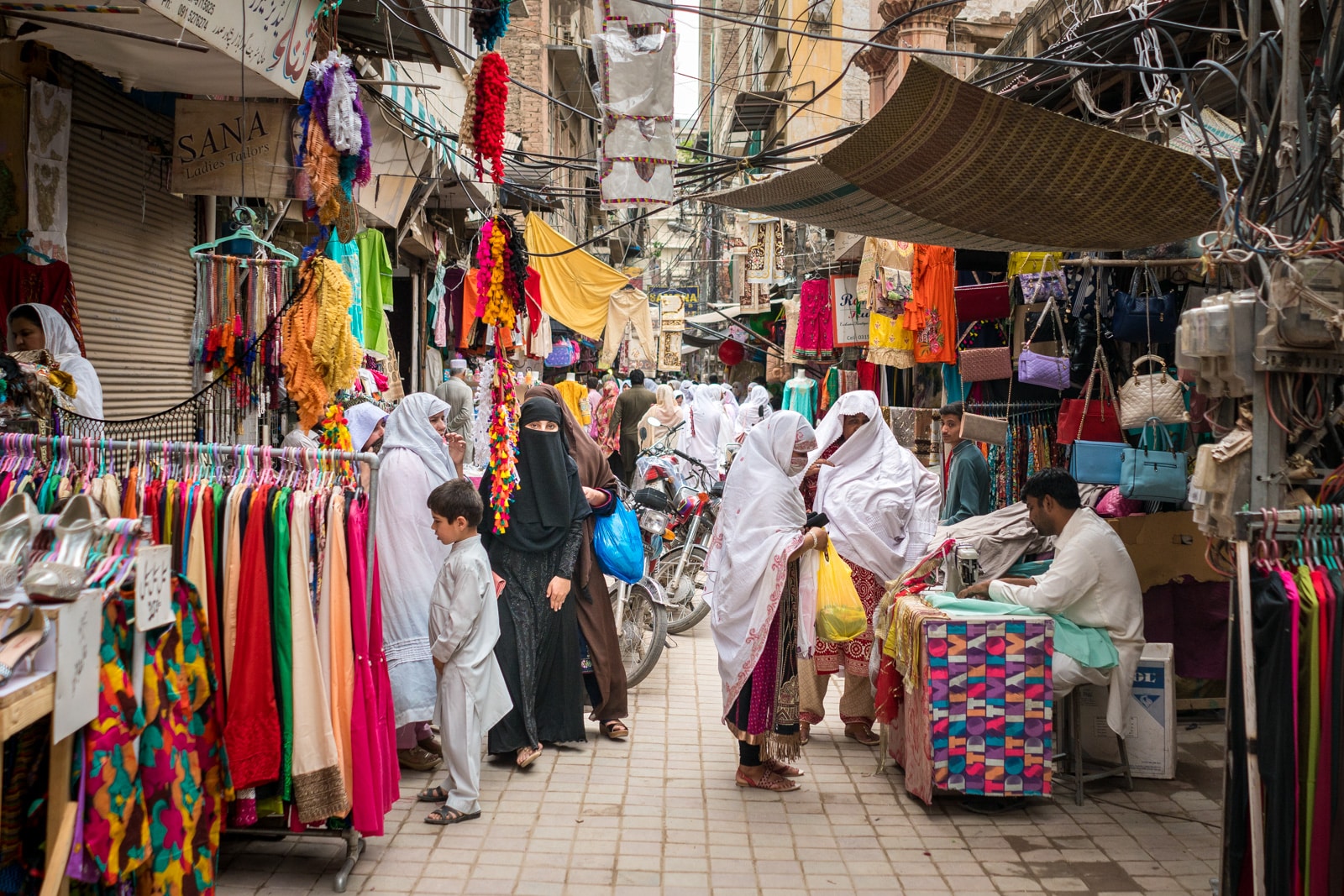
Buy some local clothes at one of the many bazaars, like this one in Peshawar, Khyber Pakhtunkhwa province
Women in Pakistan
Unfortunately, Pakistan is lagging when it comes to women’s rights. There are many places where you won’t see women on the street. Especially in rural areas, women are treated as second class citizens, domestic workers, and baby-making machines.
Foreign women are mostly be treated with respect. As an outside traveler, you straddle the line between men and women; you’re unusual enough to sit with men, but feminine enough to access women’s spaces, too.
Alas, harassment is still common, though it’s mostly restricted to unwanted touching and commentary. If a man does something to you, slap them or make a scene. Pakistanis are very protective of women and someone will likely come to your aid.
For more info, check out my guide to female travel in Pakistan .
Tipping in Pakistan
Tipping is not mandatory. Instances where you might tip someone include:
- Hiring a driver who did a good job – Several hundred PKR
- Take a private tour with a good tour guide – Several hundred PKR per day
- Dining at a fancier restaurant – Round the bill up to a more even number
- If someone goes well out of their way to help you or give you access to something – 50 to 100 PKR
If you do tip, don’t tip too much, else you’ll raise expectations for future travelers. Don’t feel pressured to tip someone if they ask you for a tip—they’re being cheeky because you’re foreign.
Pakistan travel guide: Gender divides, relationships, and sexuality in Pakistan
Pakistan’s gender divide is massive. Fly in, and you’ll see what I mean 30 seconds after stepping outside the airport.
Because of both Islam and regional culture, men and women are separated in society. Streets are a world of men, women rule in the home. Society tries to separate boys and girls until marriage… after which couples are expected to produce babies ASAP. Go figure.
That’s not to say there’s no intermingling, but it might not be what you’re used to at home. Public displays of affection—kissing, holding hands, touching in public—are taboo. Unmarried couples are subtle when they meet; you might notice them hiding in parks or behind tinted car windows. Openness about boyfriends or girlfriends is unusual. Elite Pakistanis are sometimes an exception… until their parents are involved.
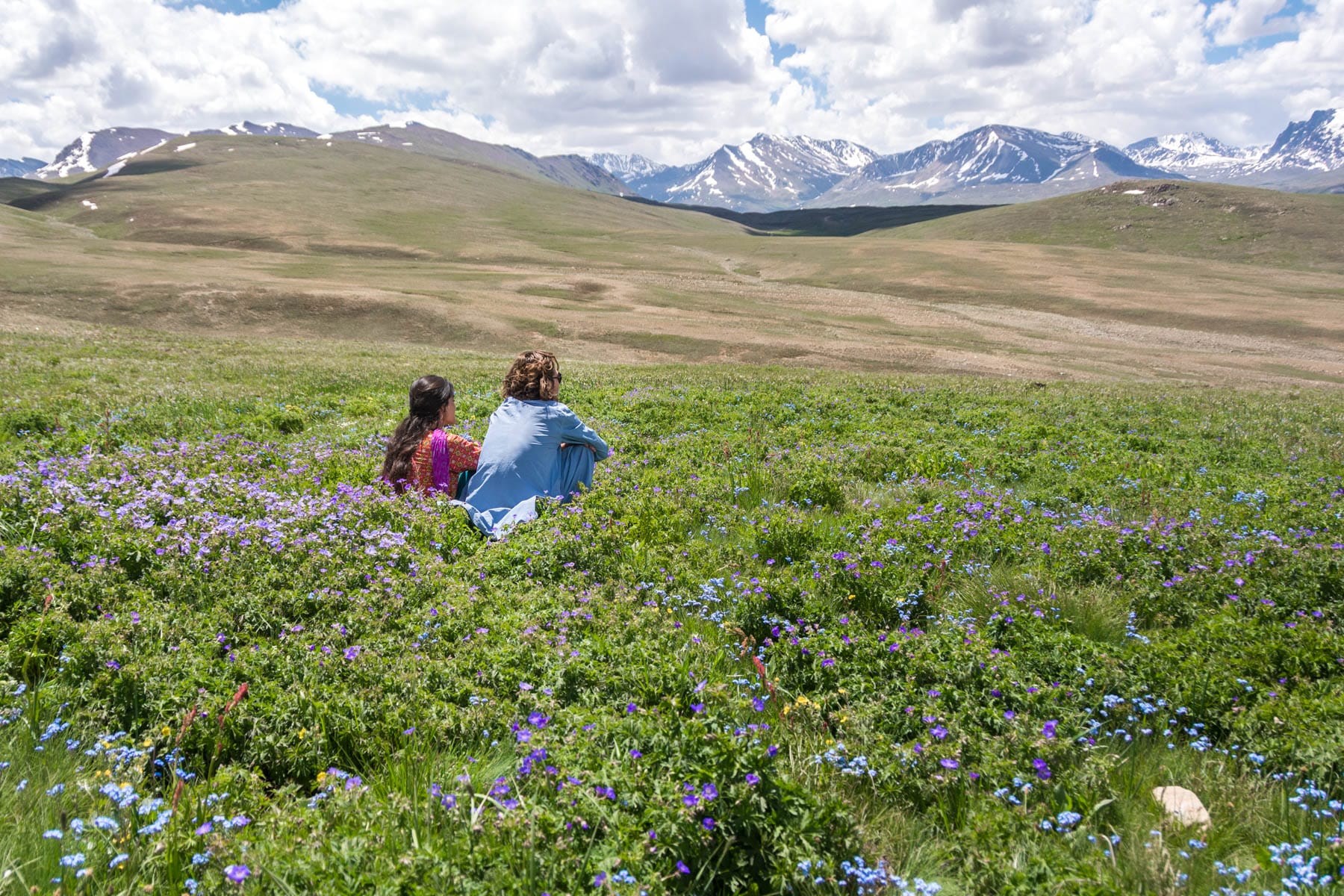
My “husband” and I back in the days when I traveled as a couple/before my solo travel began
Couples travel in Pakistan
Unmarried foreign couples should just pretend to be married. Otherwise, hotels might cause problems, and people might be uncomfortable hosting you.
Tip: Make sure you have some kind of story worked out—people are probably going to ask you about your wedding!
If you’re married, no problem! You just have to deal with constant questions about children. If you already have children, you’re on a perfect life path in most Pakistani’s eyes. Well done, you.
Women to men
Women should be on guard when interacting with men. That’s not to say all men are evil, nor should you fear speaking with men. Just know many men interpret friendliness as flirtation.
In my experience, even men I thought friends ended up hitting on me hours, days, or weeks later. To establish boundaries with men, you can call young men bhai or brother, and older men chacha or uncle.
To keep men at bay, you can say you’re married. Weirdly enough, people are more likely to believe you’re married but traveling alone than accept that you’re unmarried.
Do not say that you have a boyfriend. If you do, men will interpret that as you being sexually loose and thus willing to sleep with them. Respectable ladies do not admit they have boyfriends to men. Or so Pakistanis think.
Men to women
Boys, be cautious when interacting with women… if you can find them.
Many male travelers struggle to meet women in Pakistan. Unless hanging out with liberal/wealthy folks in cities, most women will keep their distance from you. Or stay out of sight completely.
If you do encounter women be respectful and distant with unmarried girls. Be careful if flirting. Pakistanis upset quickly; many male family members will not react well to foreign men flirting with their sister/daughter/cousin.
On the bright side, it’s more socially acceptable for men to have a girlfriend(s) than vice versa. Saying you have a girlfriend implies you’re a bit of a player, but the average man will probably respect you for it, not shame you. Mmmm toxic masculinity.
LGBTQ+ in Pakistan
As you might have guessed, Pakistan isn’t a good place to be queer.
Interestingly enough, gay couples can fly under the radar long as you don’t kiss in public or admit you’re gay. Men hold hands and put arms around men. Women hold hands and touch other women. People of the same gender share hotel rooms without issue. Basically, so long as men and women aren’t touching in public, all is well. Don’t tell anyone you’re gay and you’ll be okay.
Gay communities do exist. I’ve only met one lesbian couple in Pakistan, but I know several gay men who traveled the country and said there’s a thriving underground gay scene to be found in cities (try Grindr, Tinder, or Couchsurfing). Women, you unfortunately might have to look a bit harder.
The idea of transgenders is established in Pakistan, but not in a positive way.
Hijras are men dressed as women who traditionally beg on the streets and at weddings. Some also work as prostitutes or dancers. Aside from hijras , people aren’t familiar with transgenders or genderqueers. Brace yourself for a lot of questions and looks. If male passing, know identifying as male will save you a lot of hassle.
Hookups and relationships in Pakistan
Relationships/hooking up with Pakistanis is possible, mostly in the liberal cities of Lahore, Karachi, and Islamabad. Tinder is very active in Pakistan, and a good place to start fishing.
Dating is manageable… but if you want to actually sleep with someone you might encounter problems. Unless someone has their own place—meaning they don’t live with their family—you’ll have to find either an Airbnb or an expensive hotel room.
Men, please be careful if trying to hook up with women: their reputation can really be damaged if word gets out that they sleep with [foreign] men. In Pakistan, reputation is everything. You can leave Pakistan—and a bad reputation—more easily than they.
For love? Or for visa?
Beware declarations of love, marriage proposals, etc in Pakistan. Pakistani men commonly try to seduce foreign women in the hopes of marrying and getting a visa to another country. It’s not impossible to have a legitimate relationship… just more likely that ulterior motives are involved.
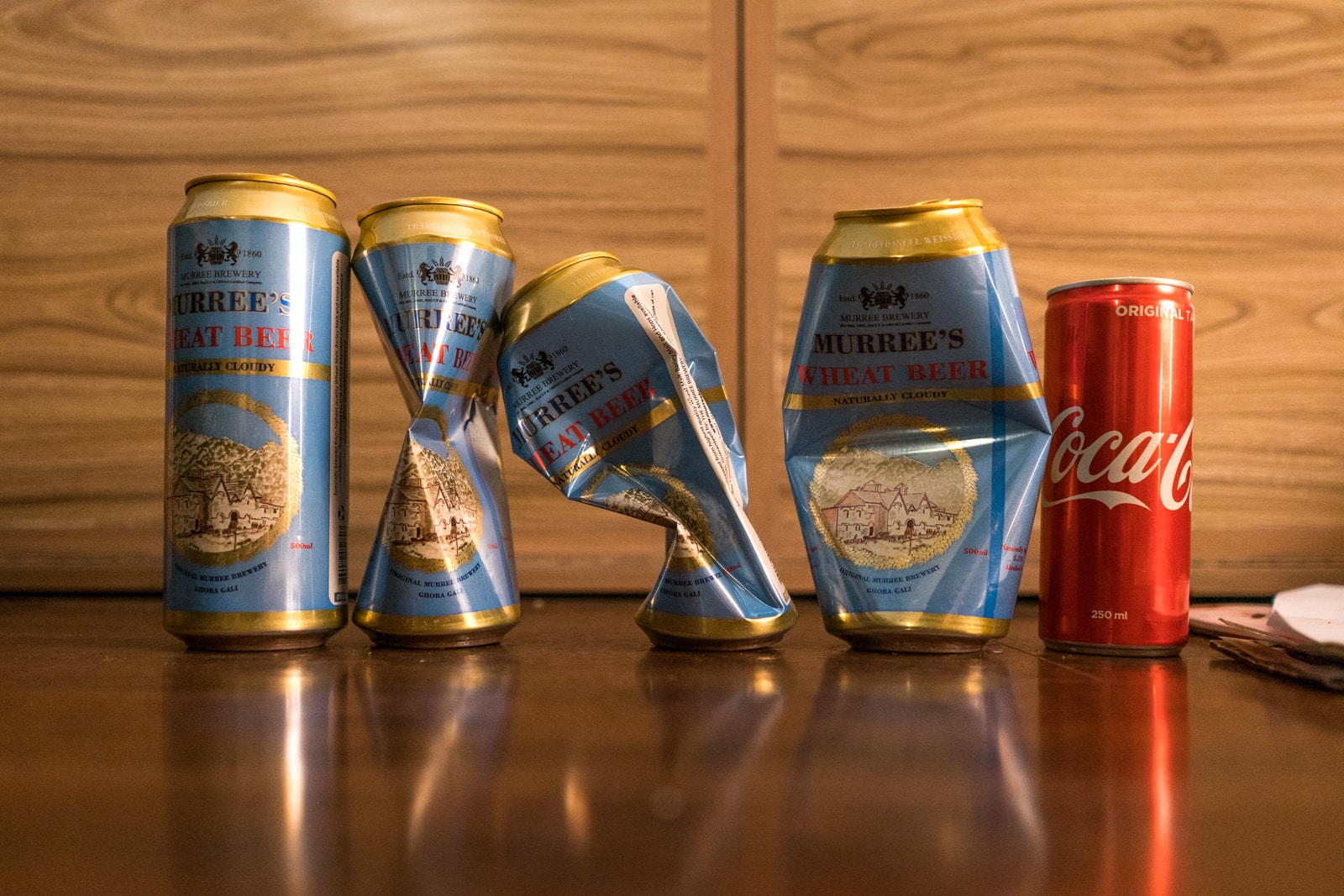
Ex-cans of Murree, the only local beer in Pakistan
Pakistan travel guide: Drinks and drugs in Pakistan
The Quran forbids substances… but that doesn’t mean they don’t exist in the Islamic Republic!
Be sensible with substances in Pakistan; Pakistanis tend to go overboard and authorities will not play nicely if they find drugs on you.
Alcohol in Pakistan
Believe it or not, there’s one legal brewery in Pakistan: Murree Brewery. They have a monopoly on all alcohol in the country, and produce everything from beer (passable, try the light blue wheat beer) to all kinds of liquor (beware).
Foreigners/non-Muslims can legally purchase alcohol from shops and high-end hotels. Wine shops are relatively common in multicultural Sindh province , but further north, you’ll need to look to five-star hotels and “permit shops” attached to them where drinks are sold at market cost. The shopkeepers can often arrange imported drinks for you under the table for an extra fee.
“Bootleggers” are the go-to choice for Muslims. Pakistanis who drink likely have phone numbers of several bootleggers who can deliver alcohol discreetly. Bootleggers are easy in this regard, though their drinks are usually more expensive than the shops’.
Hash (cannabis) in Pakistan
Hashish is everywhere in Pakistan.
It comes from the region around the Afghanistan-Pakistan border. Most Pakistani boys have tried hash at least once, and it’s easy for men to find someone to smoke with. Girls get raised eyebrows if they partake, though elite young women in cities do smoke. Ask around and you’re sure to find “stuff” everywhere in the country.
Read: Rolling with the stoners in Hunza
The best stuff is in/from Khyber Pakhtunkhwa province. Look for hash that’s relatively dry and a dark greenish brown. Despite boastful city kids’ claims, the sticky tar-like substance they smoke there is adulterated.
Other drugs in Pakistan
Yes, you can find other drugs in Pakistan.
Some pharmacies are… flexible. Heroin is widespread in the country as it comes from Pakistan’s next-door neighbor, Afghanistan. Party drugs circulate in elite society; if you’re attending a big party in Karachi, Lahore, or Islamabad, there’s a decent chance someone is on drugs. LSD, MDMA, cocaine, speed, meth, they’re all there.
Whether or not you partake is on you. I won’t judge drug usage *cough* but do be careful taking substances, especially from people you don’t know well. Just because someone says white powder is cocaine doesn’t mean it’s actually cocaine (remember, cocaine comes from South America, thousands and thousands of kilometers away ).
The drug scene in Pakistan is not so developed that you can expect the average drug user to know quality from fake. Besides, in a country where even simple things like milk are faked or cut with toxic ingredients , how can you expect illicit substances to be pure?
Be careful. And drink lots of water!
Pakistan travel guide: Religion in Pakistan
The vast majority of Pakistanis are Muslim, with scattered Christian and Hindu communities. Islam is the official state religion, the head of state has to be a Muslim, and people’s religion is stated on their identity cards.
Because Pakistan is an Islamic Republic, its laws are based on Sharia law. It has some of the most draconian blasphemy laws in the world. Foreigners won’t be held to the same standards as locals, but you should always be respectful of Islam, the Prophet Muhammad, and religious culture.
Atheism, though not officially illegal, can be punishable by death under the blasphemy law . Even if you’re not religious, it’s best to say you have a religion when asked (And you will be asked about this. A lot ) .
Pakistan is one of the worst countries in the world when it comes to the treatment of religious minorities. There are specific laws persecuting the Ahmadi sect of Islam, although few Pakistanis will want to talk about this.
It’s best to steer clear of religious discussions unless you’re well acquainted with the person you’re talking to.
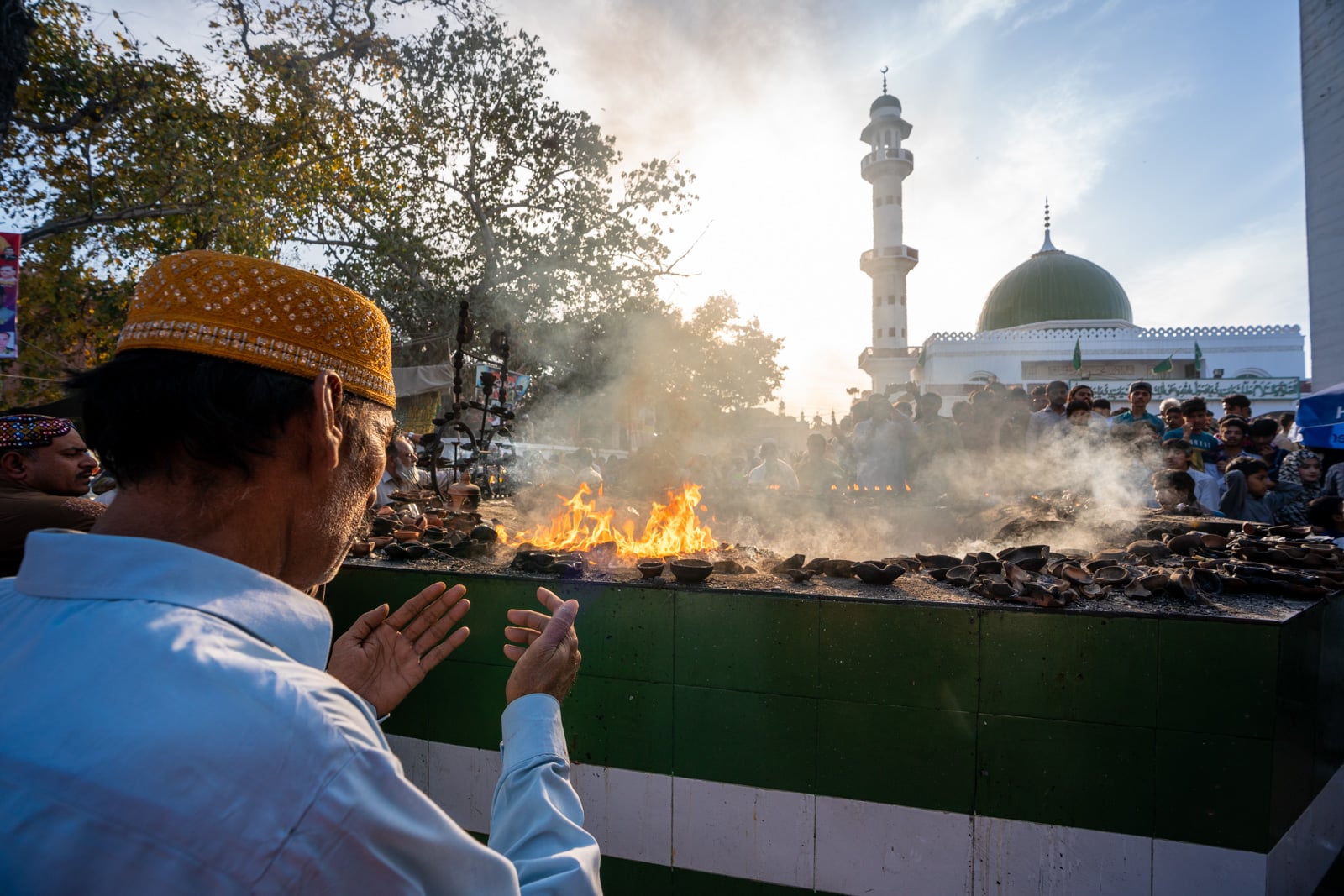
Sufism is a kind of Islam widely practiced in Pakistan, yet it can be a sensitive topic for very strict Muslims
Pakistan travel guide: Food in Pakistan
Pakistani food is delicious and diverse, but not particularly healthy. It involves lots of oil, meat, and bread—prepare to pack on the pounds. Outside of (village) homes, don’t expect any fresh salads when traveling in Pakistan aside from sliced onions, cucumbers, and maybe carrots or cabbage.
Food in Pakistan is full of flavors and spices, but rarely too spicy except for those with zero spice tolerance. However, hygiene standards are lacking. Most visitors to Pakistan will have some stomach trouble at one point or another.
Many cities have their own food culture and specialties. Lahore and Karachi compete for the title of the best foodie city in Pakistan. In major cities, more and more cafes and restaurants are attempting international flavors. Quality still varies widely; in general, it’s best to stick to local food. Don’t expect well-executed Western food unless you’re paying a premium.
Some famous Pakistani dishes include:
- Karahi : Meat stir-fried in a large pan
- Biryani : Spiced rice with meat
- Pulao : Rice cooked with animal fat or oil, usually containing carrots, raisins, and meat
- Dal : Lentils
- Channa : Chickpeas
- Roti : Thin round bread
- Naan : Thicker round bread
- Chapli kebab : The best kebab (in my humble opinion), somewhat like a burger patty… but 10x better. The best chapli kebab is found in K hyber Pakhtunkhwa (KPK) province.
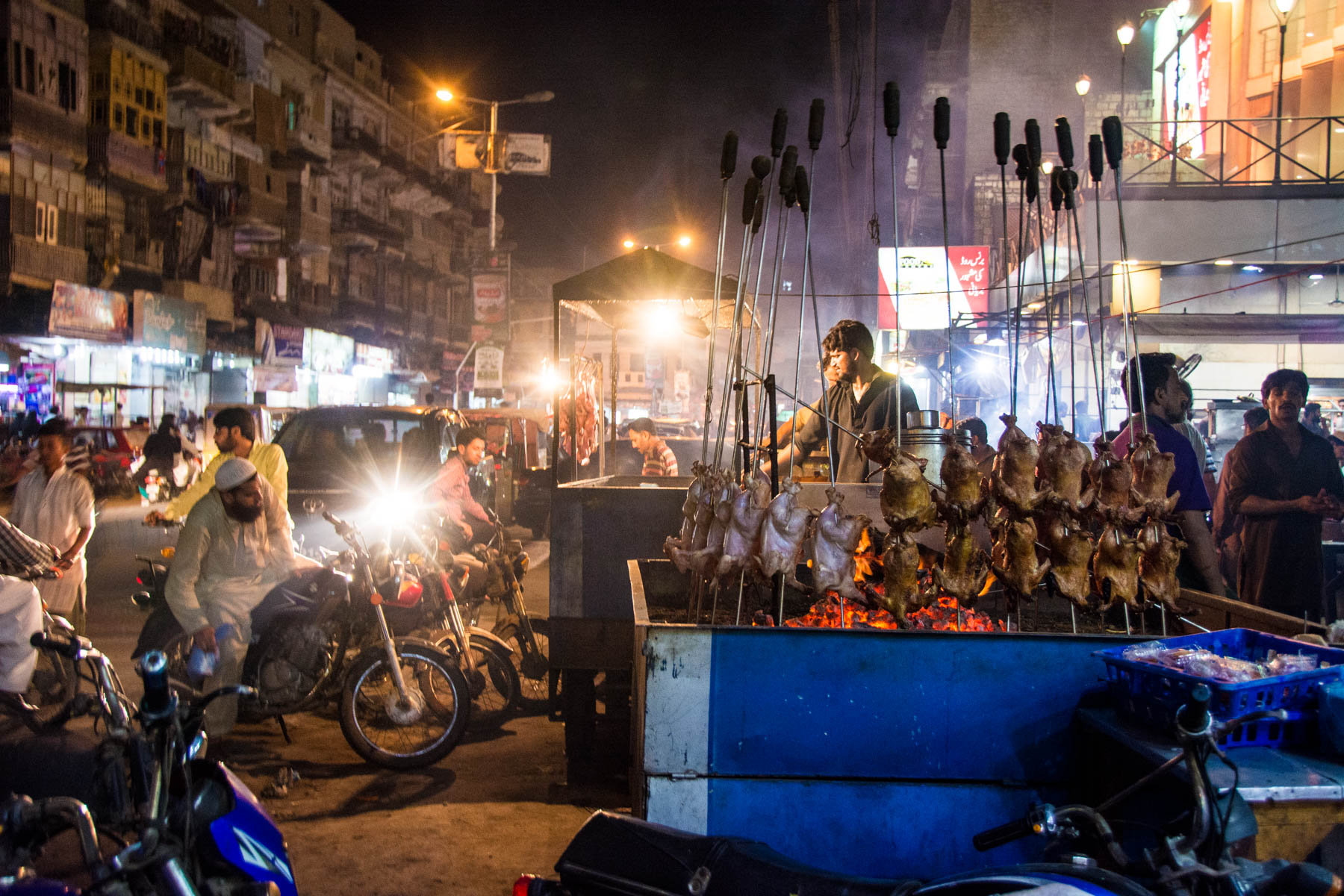
Karachi’s street food scene is on
Vegetarians and vegans in Pakistan
Traveling as a vegetarian in Pakistan can be difficult… but it is possible. Affluent Pakistanis understand (and sometimes scoff at) the concept. Except for the poorest of people, meat is a daily staple. Chicken and fish aren’t even considered “meat”—meat means mutton or beef.
If you’re a strict vegetarian, tell your host beforehand. Otherwise, it will lead to awkward situations when someone cooks up a meaty feast in your honor and you have to reject it.
Vegans will have a much harder time traveling in Pakistan. Many dishes include butter or yogurt, and explaining you can’t eat eggs will be interesting. Dal and channa are sometimes cooked in the same pot as meat, or with meat stock. Veganism hardly exists in Pakistan. Be firm, but know you’ll be restricted to dal , channa , and “mix sabzi “(mixed vegetables). You’ll need to be very clear about no butter or ghee (clarified butter).
Pakistan travel guide: Money and the cost of travel in Pakistan
Pakistan uses the Pakistani Rupee (PKR). Banknotes come in denominations of 5, 10, 20, 50, 100, 500, 1000, and 5000 Rs. There are also coins, but these are virtually useless. Some shops will give change in small candy, rather than coins!
Getting money from ATMs can be a struggle, especially in the north. Not all banks accept foreign cards. Several banks (hi Standard Chartered) charge a 500 Rs fee per withdrawal. Islamic banks do not work with foreign cards . ATMs in the mountains often run out of cash.
In my experience, Bank Alfalah , Habib Bank , and MCB Bank ( not M I B Bank) are your best bet for withdrawing cash from ATMs in Pakistan.
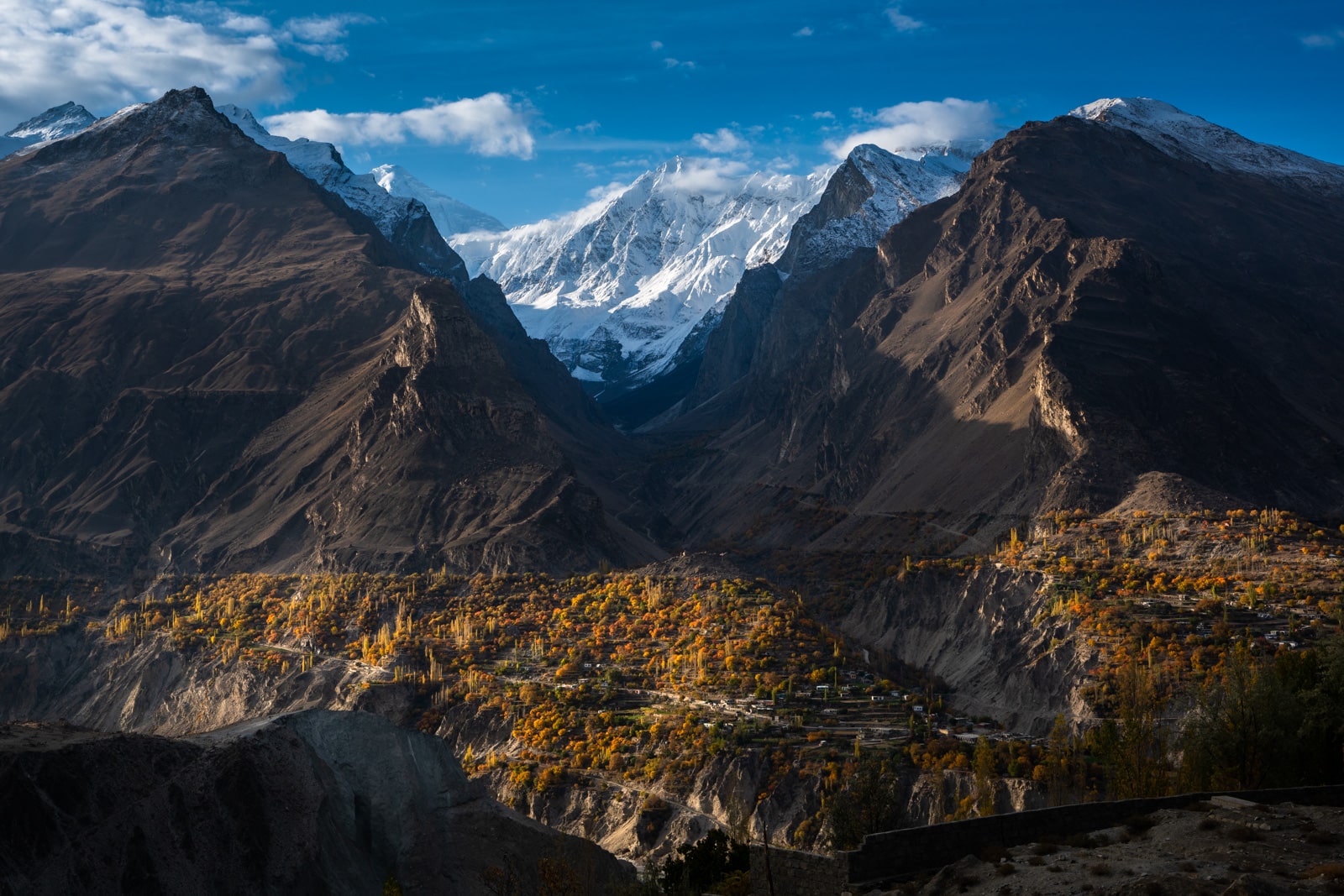
Northern Pakistan is beautiful… but can be a nightmare when it comes to finding cash. Stock up before you head up!
Cost of travel in Pakistan
Pakistan is a relatively cheap country to travel, although it can be tricky to find budget accommodation outside of the popular tourist destinations or in high season (June – August). Below is a breakdown of the average cost of traveling in Pakistan on a backpacker budget.
At the time of writing, US$1 = 155 Rs.
Food & drinks
- Water or soda : 30 – 100 Rs
- Tea: 10 – 50 Rs
- Breakfast and lunch: 50 – 100 Rs each
- Dinner: 50 – 250 Rs (street food ahoy!)
Accommodation
- Budget hotels: 800 – 1,500 Rs
- Mid-range: 1,500 – 4,000 Rs
Cultural outings
- Museums: 200 – 500 Rs
- Historical sights: 500 – 1,000Rs
- National Parks: 800 Rs
- Mosques: Free
For more info, check out this backpacking in Pakistan budget report.
If you do travel to Pakistan during high season, try to book accommodation ahead of time. Popular places along the Karakoram Highway, such as Hunza, are really popular with Pakistani tourists, and places can be full. Pakistan Traveller is a fantastic Pakistan travel guide that has a multitude of hotel recommendations for everywhere and anywhere you might want to travel in Pakistan.
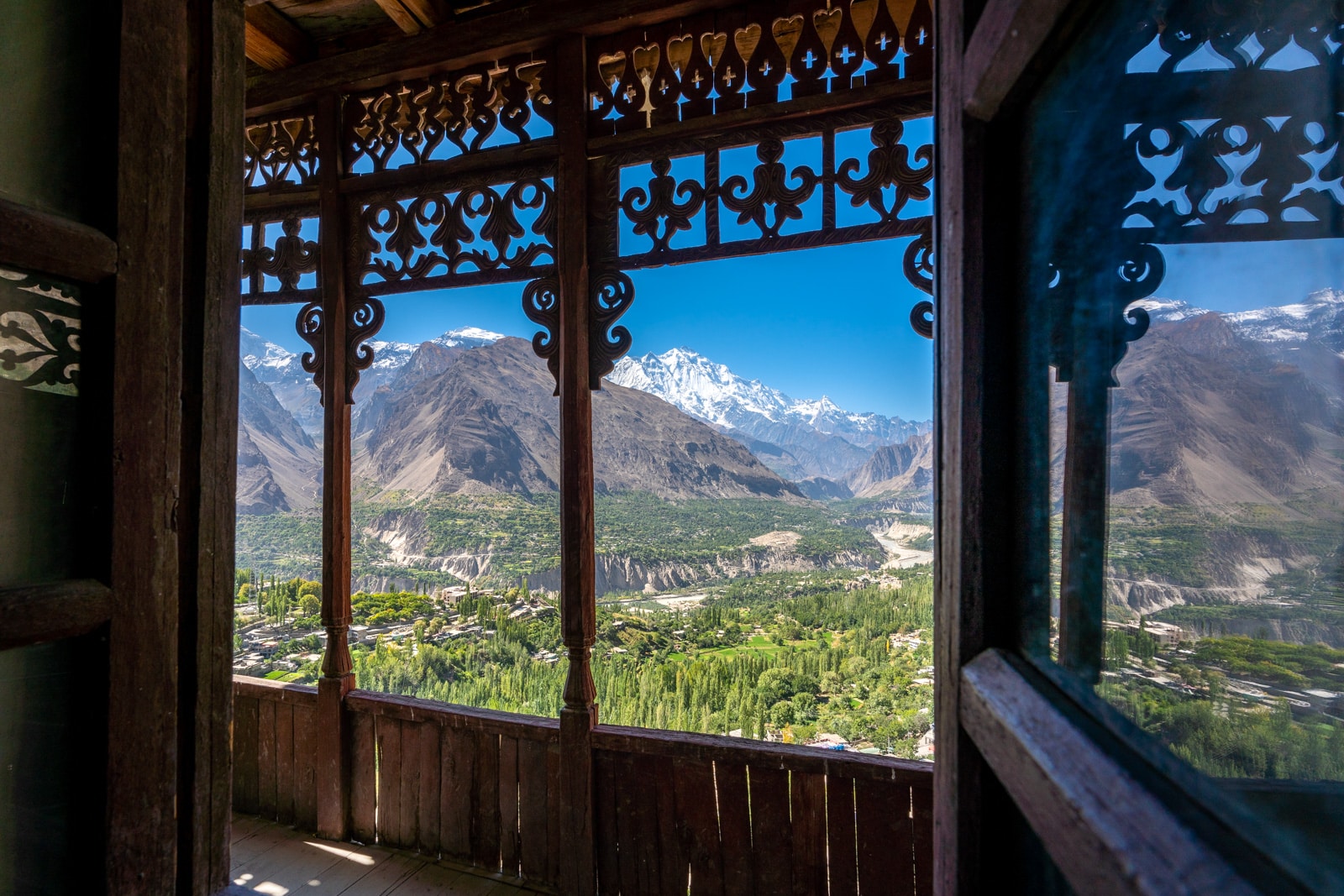
Famous sights like Baltit Fort in Hunza will cost around 1,000 Rs for a foreigner ticket
Pakistan travel guide: Visas for Pakistan
Almost everyone needs a visa for Pakistan. It used to be a real pain in the butt to get a visa for Pakistan, but the recent e-visa introduction made things much easier. The e-visa form is still way too long and full of irrelevant questions, but at least it’s a start in the right direction.
To find out if you’re eligible for a Pakistani e-visa, go to the e-visa portal of Pakistan . It also mentions a visa on arrival scheme, but many have reported problems with it. It’s better to apply for an e-visa .
How to apply for a Pakistan e-visa
Ensure you have JPEG files of:
- Passport information page
- Passport photo with a white background
- Letter of invitation by a tour company or hotel booking confirmation. I work with a local company to offer cheap letters of invitation for Pakistan evisas . Don’t miss out!
Go to the Pakistan e-visa portal and register yourself. To do this, click the “Tourist Visa” button under “Visa Categories”. It will lead you to the info page about tourist visas. If you click “Apply now”, you’ll be prompted to create a new account or log in to an existing account.
Once registered you can start your application. Allow you have plenty of time, as it can easily take an hour or more to fill out all the questions. Many of them seem unnecessary (and probably are) but alas, you have to fill in the entire form.
Once you’ve finished your application, it’s time to pay. The visa costs US$35 for most nationalities. You can pay with Visa or MasterCard. I’ve heard reports of the payment not working all the time, so check you actually paid.
After you’ve paid, click “Submit your Application”. If you don’t do this, the application will remain pending.
The e-visa portal states it takes 5-7 working days for a visa to be approved, but turnaround can be much faster. If you haven’t heard anything after 7 working days, contact them directly via the e-visa portal. It’s possible they need additional documentation from you.
Pakistan travel guide: Entering and exiting Pakistan
Pakistan shares a border with Afghanistan, China, India, and Iran. It also has multiple international airports. There are no international ferry services to or from Pakistan.
To enter Pakistan you need a valid visa, and you need to fill out an arrival form at customs. The arrival card asks the usual questions such as your name, address, name of the hotel you’ll be staying in, etc.
Exiting Pakistan is straightforward, and no forms have to be filled out.
Land borders
- Afghanistan : This border is at the famous Khyber Pass. Technically, this border is closed to foreigners, but there have been reports of people successfully crossing this border. However, we don’t recommend using this border, as traveling overland in Afghanistan comes with considerable risk.
- China : The land border with China at the Khunjerab Pass is the highest paved border crossing in the world. This border should be open year-round, but heavy snowfall in the area sometimes leads to closures. Check ahead if crossing this border during winter months. For more info, check out my guide on crossing the border between Pakistan and China at the Khunjerab Pass .
- India : Many people believe that the Wagah border isn’t open to foreigners. This is not true. Provided you have a visa, this is actually a pretty easy border to cross. For more info, check out my detailed guide on crossing the famous Wagah border between India and Pakistan . The Wagah border is the only border between India and Pakistan that is open to tourists.
- Iran : There is only one border crossing open to tourists, and it’s not the most relaxing experience. The crossing is located in the Baluchistan province of Pakistan, an area that the government deems too unsafe for independent travel. You’ll get a security escort on the Pakistan side. For detailed info about this border crossing, check out my guide to crossing the border between Iran and Pakistan .
International airports
The main airports in Pakistan are in Islamabad, Lahore, and Karachi. Several major airlines fly into Pakistan, and more routes are being added regularly. These include routes to London, Dubai, Istanbul, and Kuala Lumpur.
Pakistan travel guide: Accommodation in Pakistan
Booking a place to sleep in Pakistan ahead of time can be challenging. Although websites and online booking are becomig more common in Pakistan, it’s still not as widespread as in surrounding countries. Pakistanis usually call ahead to reserve rooms.
Finding hotels to stay at in less-visited places—especially ones that accept foreign guests—can be quite the challenge. That’s where having a Pakistan travel guide in print can make a huge difference; all the information is already there. If you’re open to carrying a Pakistan travel guide book with you, I can’t recommend Pakistan Traveller by Urbanduniya enough.
Online booking in Pakistan
Booking.com and Airbnb are growing in Pakistan. The former is still mostly for mid-range to luxury hotels, and the latter works… sometimes. There are an unfortunate amount of creepy men on Airbnb offering rooms in their homes to female travelers only; beware and steer clear.
Facebook pages are increasingly common for mid-range accommodation options, and can be useful for contacting a property to ask questions or reserve a room.
How to find cheap guesthouses in Pakistan
Want to find a cheap place to rest your head? You’ll need to rely on the traveler grapevine. Guidebooks are not very reliable for prices— Pakistan Traveller by Tim Blight being the only exception—and not all cheap hotels and guesthouses accept foreign travelers.
Facebook groups like Backpacking Pakistan and Female Pakistan travelers are your best bet for information on cheap places to stay. Use the search function to find accommodation discussions.
It’s a bit of a hassle, but there’s a plus side: you can haggle over accommodation price upon arrival . Don’t feel bad about it, especially in touristic areas with inflated seasonal prices; Pakistanis expect it, and will take advantage of foreigners who do not haggle. If you can get 15-25% off of the quoted price—up to 50% if it’s particularly inflated—you’re doing well.
Some popular accommodation for backpackers in Pakistan you might want to be aware of include:
- Lahore Backpackers (US$6 for dorm bed)
- Five Giants (US$15-20 for a shared room in homestay)
- Adam’s House (US$10 for a private room)
- Islamabad: Backpackers’ Hostel & Guesthouse Islamabad (US$8 for dorm bed)
- Madina Hotel and Madina Hotel 2 (around US$10-20 for a double)
- Karimabad: Old Hunza Inn
- Peshawar: Hidayat Hotel
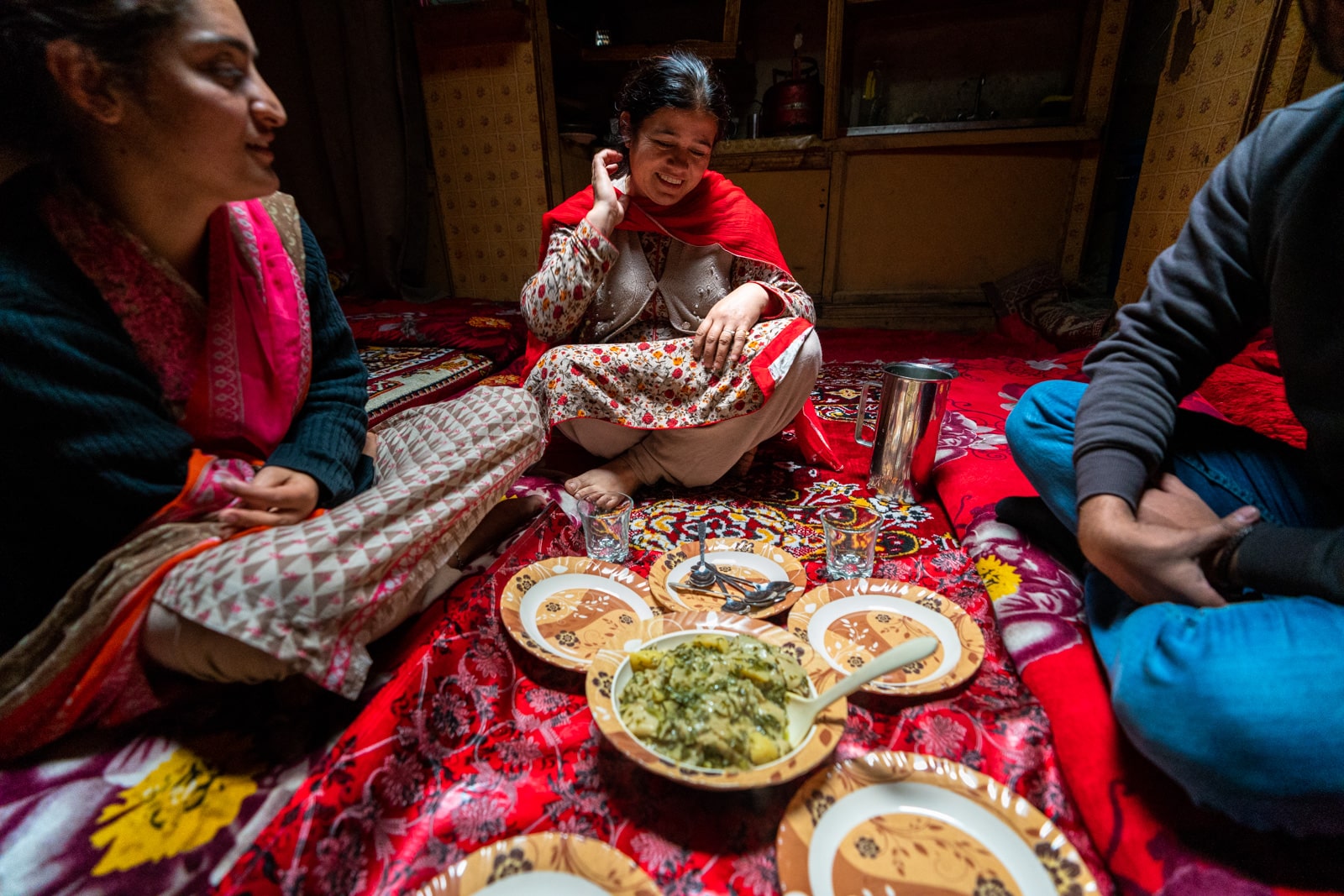
Lunch with my host at a homestay I found through Let’s Home
Homestays in Pakistan
Until recently, there weren’t many homestay options in Pakistan, but that is changing. Check out my article on homestays in Pakistan to get all the latest info.
A special shoutout goes to Seema, a motivated Hunzai woman, who recently started a booking platform called Let’s Home . She offers a variety of accommodation including homestays around Gilgit Baltistan. I used it to find a family in old Altit, and had a great experience.
Couchsurfing in Pakistan
The Couchsurfing community is highly active in Pakistan’s cities, and local CSers are eager to host foreigners. Most of the CS community is male, but there are few female members in major cities and many men are trustworthy. Always read the host’s references before agreeing to stay.
Since CS has become a paid service now, check out the Facebook group for CSers in Pakistan.
Being hosted in Pakistan
It’s remarkably easy to be hosted once on the road.
Unbelievable until you’re in Pakistan, but many people will simply offer you a place in their homes if you chat with them long enough. Their overwhelming hospitality is a privilege; make sure not to abuse their kindness. Don’t overstay your welcome, help around the house (they won’t accept at first), and bring small gifts from your country or tokens of appreciation like fruits or sweets.
Another bonus to being hosted: in Pakistan, family and friends are everywhere and it’s normal to stay with them when visiting places. Your host will probably offer to find a friend for you to stay with in your next destination. Make one friend, and their whole social network opens up!
Pakistan travel guide: Transportation in Pakistan
Pakistan has a myriad of transport options. Train, bus, and minibus are most common for long-distance travel. For shorter distances use either rickshaws (south of Islamabad), taxis (Islamabad) or Jeeps (north of Islamabad).
Pakistan has an extensive rail network. Trains are relatively comfortable, albeit a bit slow. Prices are reasonable unless you want AC class. It is advisable to book your ticket ahead of time, and with the help of a local.
Check the Pakistan Railway website for schedules and fares. The website is not the easiest to use, but it’ll do. If you have a local friend with a credit card and phone number, they can book you a ticket online. Don’t roget to read my guide on train travel in Pakistan before you do!
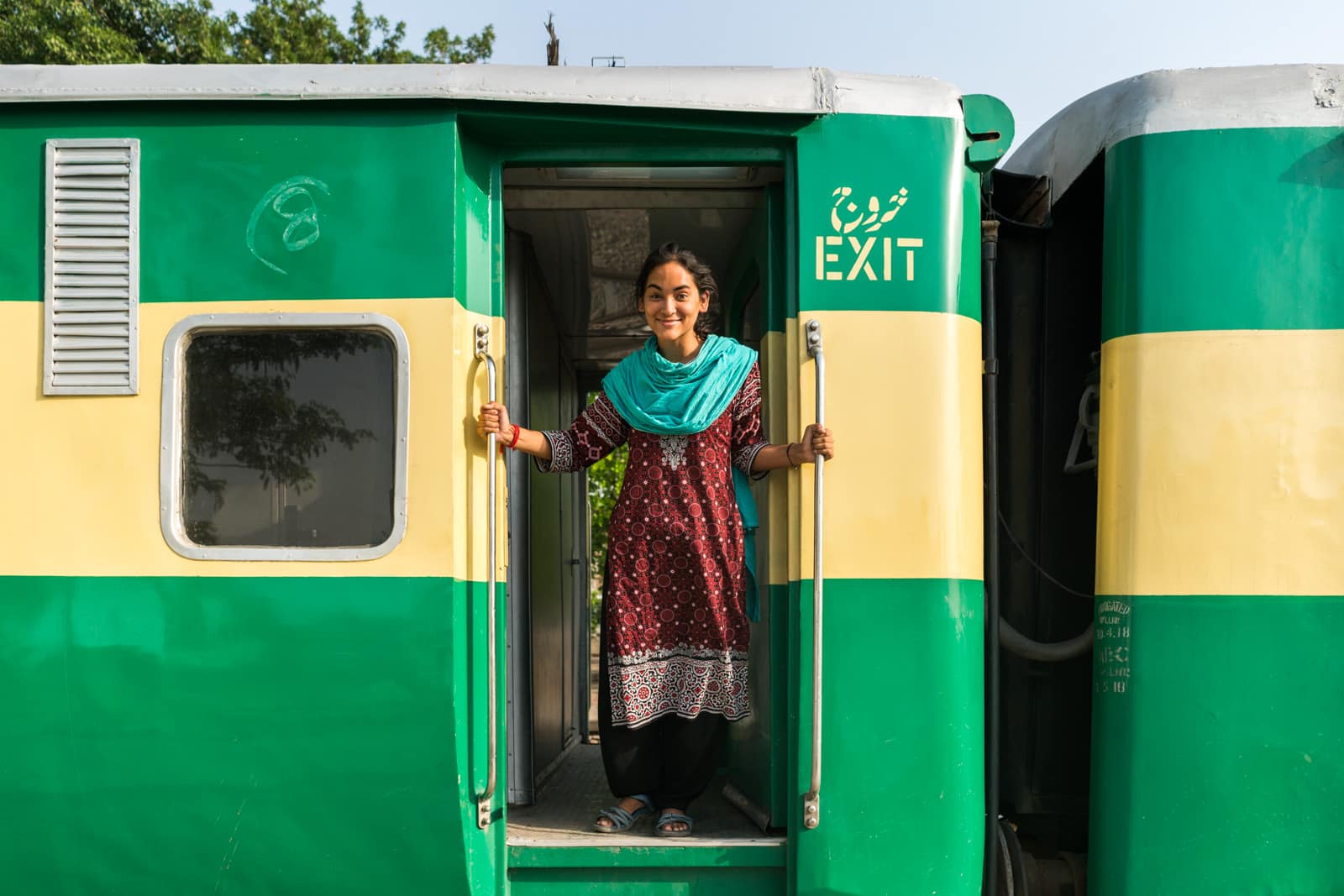
Buses and minibuses
Pakistan’s multitude of bus options are sometimes overwhelming. But that’s where this Pakistan travel guide can help you out!
From crappy minibus, to bedazzled local buses, to well-run Daewoo and Faisal Movers services, there are a lot of ways to get from A to B.
High-end bus services
When I’m in a rush and want to make sure I reach my destination on time, I prefer Faisal Movers, Daewoo, or for Gilgit-Baltistan, NATCO. These services are professional, leave on time and are very comfortable. Definitely worth the extra rupees.
- Schedules for Daewoo
- Schedules for NATCO
Ticket prices depend on the type of bus. I’ve had luxurious buses with reclining seats and AC… and passable contraptions with no AC. Different buses go at different times. To get an idea of prices, a Daewoo from Lahore to Islamabad (Rawalpindi) goes for 1,000 to 1,500 Rs for the four-hour journey .
You can usually book tickets on the same day at the bus station or through your hotel. Note that Daewoo has its own stations, so make sure you go here and not to the local bus station.
Local buses and minibuses
Prices for local buses are much cheaper, but you’ll be packed in like sardines in a can.
Minibuses are usually available for shorter hops between towns. Sometimes there’s a minibus yard, sometimes they leave from a specific point on the road, and sometimes… nobody knows where they leave from! Ask locals to figure out where you can find a bus to your next destination, or wait on a roadside and try flagging down passing minibuses—they can stop anywhere.
Minibus prices should be set, but ticket hawkers are likely to try making some extra money off of you. A minibus shouldn’t be much more than 200 Rs for a five-hour journey . Ask a fellow passenger what the price is, or watch to see what other people around you are paying.
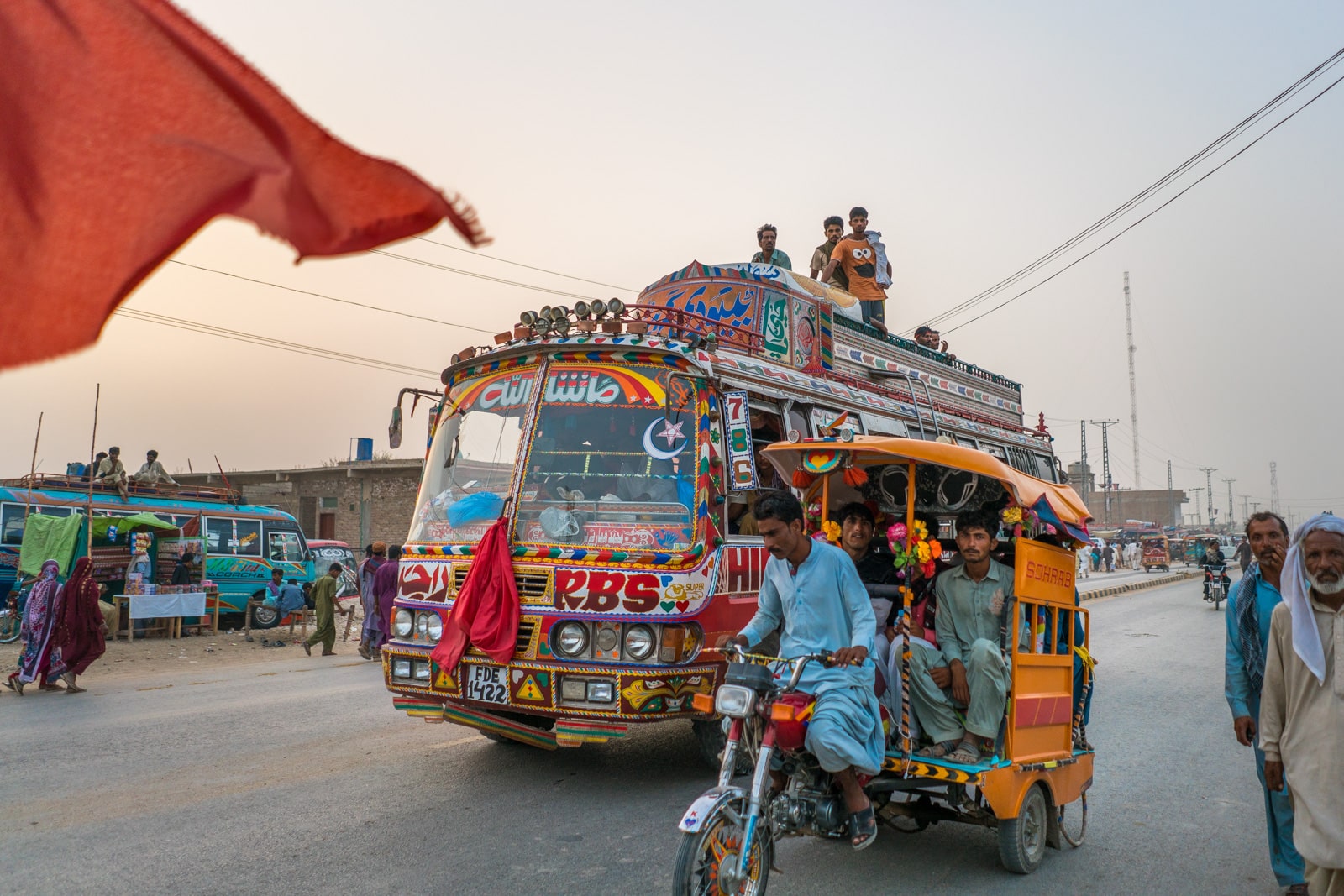
Local bus and a Qingqi in Sehwan Sharif
To save yourself some hassle, download the taxi app Careem , which most Pakistanis use to get taxis. Uber (now the owner of Careem) also operates in major Pakistani cities.
Both offer a variety of vehicles ranging from motorbikes to rickshaws to air-conditioned cars, and they’re by far the easiest and most hassle-free way to get around cities.
Rickshaws and Qingqis
Rickshaws (with doors) and Qingqis (pronounced “ching-chee”, totally open) have a somewhat bad reputation, but in my experience, they’re the fastest way to get around in cities. There are no set prices, though, and sometimes you have to drive a hard bargain.
As a basic rule of thumb, for foreigners, the actual price is probably around 50-75% of what the rickshaw driver initially quotes you. Offer half of what he’s saying, then bargain up from there. Alternatively, check the price of a rickshaw to your destination using the rideshare apps Uber and Careem—yes, they offer rickshaw rides, too—and use that as a bargaining point.
Don’t be afraid to walk away if the price seems too high. There are thousands of rickshaws around; another rickshaw driver is sure to appear if you’re not satisfied with the price.
Pricing is a bit tricky, but a 10-minute drive should cost about 150 Rs.
Many places in the mountains, such as Fairy Meadows and Deosai, are only accessible by jeep. There are public transport jeeps for remote valleys like Chapursan and Shimshal , but in other areas you’ll have to hire a private jeep.
Prices to popular places such as Fairy Meadows are fixed and non-negotiable, while others are more… flexible. It pays to wait around and see if you can share a jeep with other people going your way. Alternatively, you can post in the Backpacking Pakistan Facebook group to find someone to share a ride with.
A jeep to Fairy Meadows is 7,500 Rs, and a jeep to Deosai is 8-10,000 Rs for a day trip. Overnight trips are more expensive. Hotels can arrange jeeps for you, at a higher cost. Your best bet is to ask friendly locals what a decent rate should be.
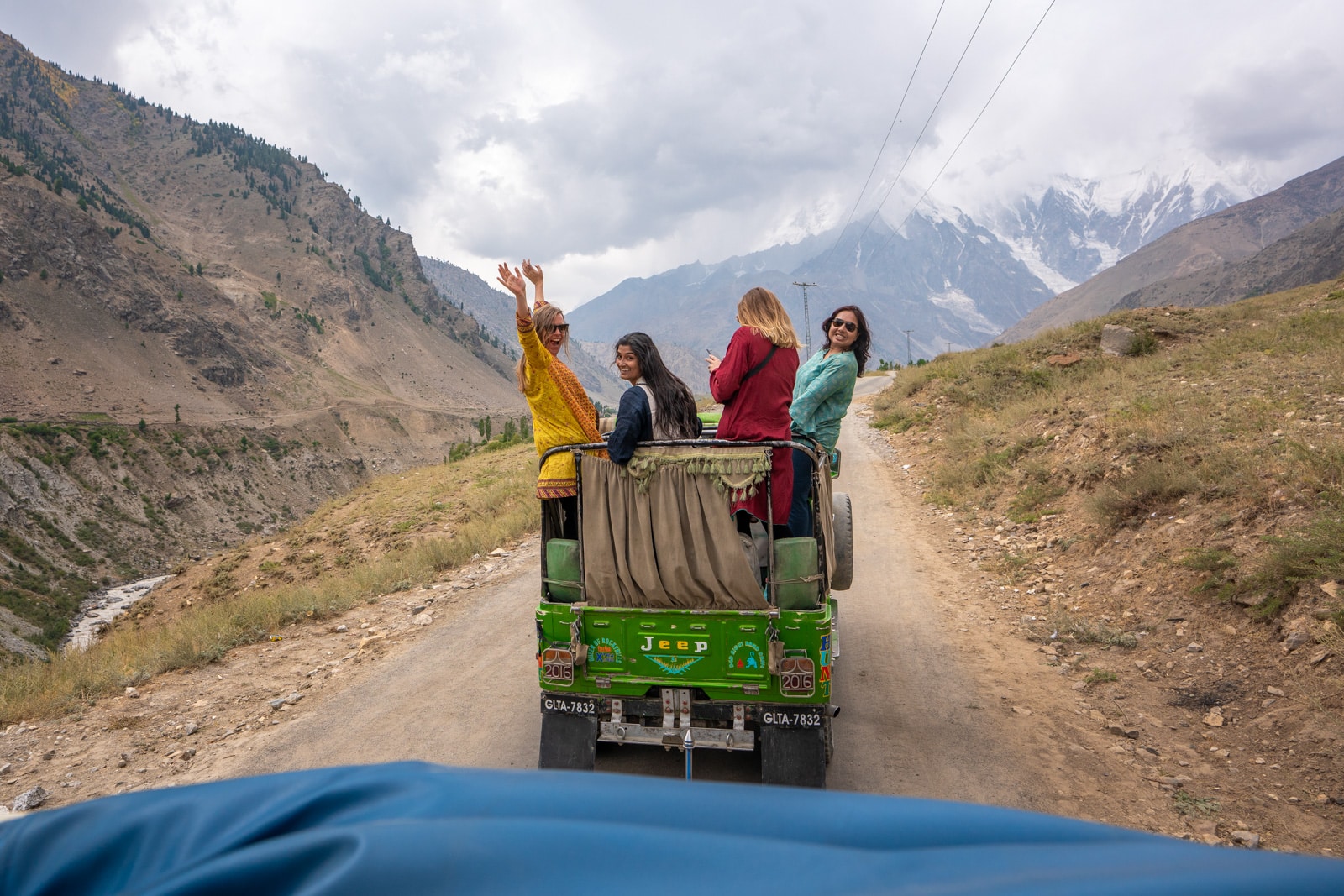
A private jeep hired during one of my unique women-only tours of Pakistan
Pakistan travel guide: Safety in Pakistan
One of the things people want to know before going: is Pakistan safe? A fair question!
For years, Pakistan was associated with violence. Terrorist groups were in power in many rural areas and terror attacks were common in cities. Heck, even now many governments advise against travel to (parts of) Pakistan. There’s no denying the country is still perceived as dangerous.
Although terrorist attacks still happen—and not all places in Pakistan are safe for travel—the security situation has largely improved. The Pakistani military has stabilized the security situation. Places that foreigners are likely to visit, such as the cities of Lahore and Islamabad or the mountains of Gilgit Baltistan are generally safe to travel, given you take standard precautions. The fact that you’re reading through this Pakistan travel guide means you’re already more prepared than others.
Legitimately dangerous areas are off-limits to foreign visitors, so the chance of something serious happening to you is slim. The biggest dangers of traveling in Pakistan are traffic-related, pollution, and getting sick from poor hygiene standards. Oh, and hospitality 😉
To be fair, there’s a good chance you’ll still feel uncomfortable at times with the current security situation. Pakistan is still a police state. There’s a lot of heavily armed personnel on the streets, and many security checkpoints throughout the country. Sensitive sites such as shrines and religious minority gatherings will be filled with army/police/security. Don’t let it intimidate you—these people are there for safety purposes.
To learn more about safe travel in Pakistan, check out my article on whether it’s safe to travel in Pakistan .
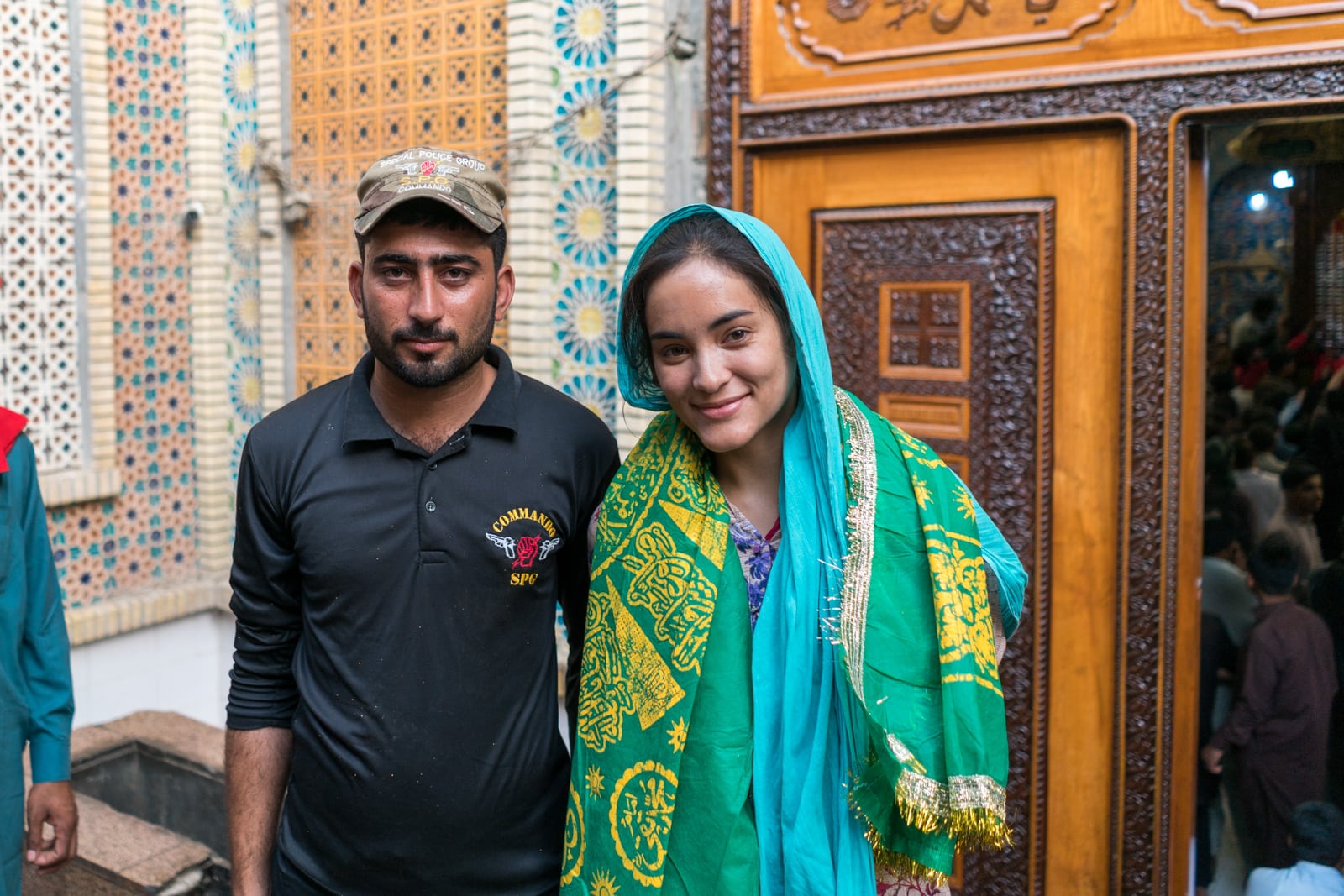
That time I had a security escort with me during the urs of Lal Shahbaz in Sehwan Sharif
Dealing with security in Pakistan
When people ask me about the security situation in Pakistan, I usually respond with “Pakistan doesn’t have a security problem, in Pakistan security is the problem.”
Security agencies are a sore spot for many foreign travelers in Pakistan, though don’t say so to any Pakistani.
To be fair, it’s in the agencies’ interests to keep foreign travelers out of trouble. If anything happens to a foreigner it will be all over the news and Pakistan’s international image will sink further.
Agencies are overbearing with foreigners because of this. In my years of travel in Pakistan, I’ve had intelligence agency stalkers, confrontational encounters with police, mandatory armed guards. Police and army stopped me from going places saying I needed permission or an NOC (non objection certificate) but didn’t say how to get one.
On the bright side, things have vastly improved in the last year. Gilgit Baltistan and the Chitral region almost entirely removed the need for NOCs and armed escorts in 2019 .
However, you’ll likely encounter issues if traveling to less-visited destinations, especially in southern Punjab and Sindh province . Common problematic places for travelers include:
- Multan – Foreigners are often required to leave immediately if discovered by police. Can only stay if unnoticed residing at luxury hotels.
- Bahawalpur – Foreigners are not allowed into army-occupied palaces, and can again only stay at expensive hotels.
- Sukkur – Multiple travelers reported questioning and harassment by security agencies when visiting Sukkur.
Hopefully security won’t be an issue for you, but if you must deal with security, be polite but firm. Ask them to show their identification first. Save phone numbers of Pakistanis you meet in the government or army; power and connections go a long way with security agencies. If what they’re asking of you doesn’t make sense, stand your ground.
Protip: Never insult the army. Most Pakistanis love the army. Despite their rather ominous not-so-secret control of the country, they did help stabilize it and don’t ask for bribes like police do. Pakistanis will not take kindly to army insults.
Pakistan travel guide: Connectivity in Pakistan
Connectivity in Pakistan is hit-and-miss. Wifi is often bad—if present at all—and mobile signals can go down at any time for no reason. Signals are often blocked during large events that may pose a security threat. Cities have decent 4G coverage, but especially in the rural north, there are many places with no coverage at all. If you want to have the widest range of coverage, you’ll need two or three different sim cards from several mobile operators.

Mobile SIM cards for calling and data in Pakistan
Overall, Zong and Telenor are your best bet in cities and rural areas. In northern Gilgit Baltistan, Zong and Telenor work in some areas, but it’s a better idea to buy a SCOM SIM card instead. You can buy them at customer service centers in hubs such as Gilgit, Aliabad, and Karimabad.
Getting a SIM card can be an annoying process. Foreigners cannot buy SIM cards at any outlet—you have to go to an official “customer service center” of the mobile provider to get one. You must fill out a registration form to buy a SIM, so bring copies of your passport.
It usually takes 4-12 hours for your card to activate (24 for SCOM). Your SIM card will expire when your visa expires.
WiFi in Pakistan
WiFi in Pakistan is spotty at best. Upscale cafes will have Wifi that may or may not work, as will high-end hotels. Besides that, you’re pretty much lost.
Rather than relying on WiFi networks, I usually buy a large mobile data pack (10GB, mmm blogger life) and use my mobile phone as a WiFi hotspot. If you’re going to do that, buy a power bank so you don’t have to worry about your phone running out of battery while you do so.
Pakistan travel guide: Being a responsible tourist in Pakistan
Pakistan encourages many bad habits; it’s easy to forget to be a responsible tourist in the face of it all.
Nevertheless, we visitors have a responsibility to Pakistan and its people to leave a positive impact on the country, especially as tourism develops. Here are some suggestions for visiting Pakistan responsibly:
- Always ask before taking someone’s picture, especially women . Many women (and their male family) are sensitive about having their photo taken.
- Don’t take photos of children unless you have permission from their parents . Share sparingly. Pakistani photographers abuse this all the time; that doesn’t make it right.
- Keep places clean . If you find a plastic bag or have one to spare, use it to collect trash while walking in nature. Dispose of trash somewhere where it might be disposed of properly.
- Hire local guides and drivers. Punjabis tend to dominate the tourism scene, but they are not locals outside of Punjab.
- Support female-run businesses . Pakistan is far from gender equality, but many women in the country are trying to change that. Some totally female-run examples are Let’s Home for accommodation, The Mad Hatters for organized tours, and A Piece Of Cake café in Lahore.
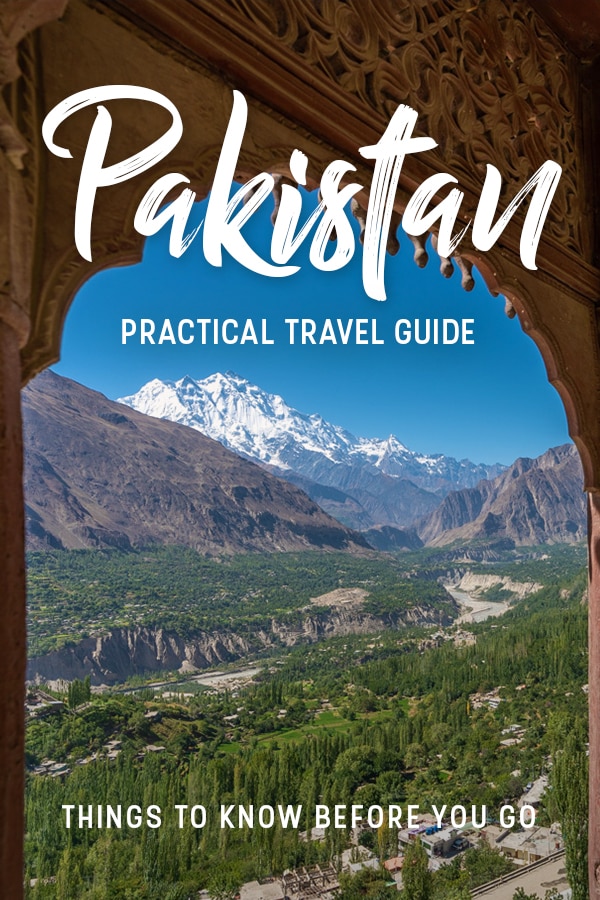
Useful? Pin it!
Other useful resources for planning Pakistan travel
Want more sweet Pakistan travel deliciousness? Below are several of my favorite posts to help you plan your trip to Pakistan. They’re full of all kinds of things to know before going to Pakistan.
Pakistan tours I run
- 3 weeks: Pakistan for women, by women
- 2 weeks: Pakistan adventure motorcycle tour
Best Pakistan travel guide book
Pakistan Traveller by Urbanduniya is hands down the best printed Pakistan travel guide on the market. I know; I helped him with the latest edition!
Pakistan travel guides on Lost With Purpose
- Is Pakistan safe to travel?
- Guide to traveling in Sindh province
- Is it safe for women to travel in Pakistan?
- Female traveler’s guide to Pakistan
- First timer’s guide to train travel in Pakistan
- Experiences to add to your Pakistan bucket list
- Traveling Pakistan during Ramadan
Region-specific Pakistan travel guides
- Things to do in Lahore
- Chapursan Valley travel guide
- Phander Valley travel guide
- Kalash Valley travel guide
- Guide to trekking in Swat Valley
Epic Pakistan experiences
- The longest border crossing in the world
- Desert trippin’ at the urs of Lal Shahbaz Qalandar in Sehwan Sharif
- Sufi nights in Lahore
- Learning to motorbike in Pakistan
- Rolling with the stoners in Hunza
- Bloodbaths in the Walled City: Eid al Adha in Lahore
Need even more tips about travel in Pakistan? Ask them in the comments or get in touch .

Alex Reynolds
33 thoughts on “ pakistan travel guide: everything to know before you go ”.
Very good and creative method for building backlinks to your site and also traffic. It’s very good! Thanks a lot for this post!
Outstanding read!
Very Informative and funny.
Thanks for sharing.
great article thanks for sharing. i always struggeld with finding an ATM, so then i foudn this travel app ” ATM Fee Saver” it shows ATMs close by and gives information about their fees and limit. super useful 🙂 maybe you wanna check it out.
Leave a Reply Cancel reply
Your email address will not be published. Required fields are marked *

- Privacy Overview
- Strictly Necessary Cookies
This website uses cookies so that we can provide you with the best user experience possible. Cookie information is stored in your browser and performs functions such as recognising you when you return to our website and helping our team to understand which sections of the website you find most interesting and useful.
Strictly Necessary Cookie should be enabled at all times so that we can save your preferences for cookie settings.
If you disable this cookie, we will not be able to save your preferences. This means that every time you visit this website you will need to enable or disable cookies again.

The Perfect One Month Pakistan Itinerary! (Insider Tips)
Planning to visit Pakistan?
Congratulations, you’ve just made the absolute best travel decision of your life! Pakistan is one of the most incredible – and underrated – destinations on the planet.
But with tourism in the country just getting re-started, planning a trip to Pakistan can seem a bit overwhelming. And trust me when I say a solid Pakistan itinerary goes a long way – especially if you don’t have much time.
Because the reality is, that you do NOT need to be on a tour to travel to Pakistan. I first came to the country (sans tour) in 2019, and loved it so much that 3 years later – I actually live here!
Now having visited every single province and territory (including Balochistan and Azad Kashmir), I can confidently say that THIS Pakistan itinerary is most likely to make you fall hard for this incredible country, too.
So let’s do this – the ultimate one month Pakistan itinerary (with add-ons for slow travelers of course) compiled from more than one year of living and traveling in the country!

After more than 2.5 years living in Hunza, I now run women’s tours to the valley that are committed to supporting local communities.
Click here to skip ahead to the itinerary!
Why Visit Pakistan?
Pakistan, Pakistan, Pakistan. Long written off as a viable travel destination, tourism in the country is back and better than ever.
More and more foreign tourists are discovering the magic of Gilgit Baltistan – a mountainous territory – and the rich cultural heritage sights that can be found all over the country.
Backpacking Pakistan is an adventure like no other, and while it’s becoming slightly more popular, you’ll likely go weeks without seeing other travelers.
With some of the best scenery in the world, and the MOST hospitable people, there are millions of reasons to visit Pakistan.

Delicious food, thousands of glaciers, unique traditions, thousands of epic historical sites , and some of the highest mountains on the planet are just a few reasons why you shouldn’t skip out on Pakistan.
Understandably, this infrequently visited South Asian nation can seem intimidating at first. But in reality, Pakistan is extremely affordable for foreigners and does NOT require a tour.
Folks are always willing to help tourists, and public transportation truly goes just about everywhere if you have enough time.
Armed with this Pakistan itinerary, you should be able to go about your entire trip independently , which is the absolute cheapest way to travel.
Pakistan Travel Vlog

Is Pakistan Safe?

If you’re wondering if Pakistan is safe , the answer is yes! Especially the places on this itinerary, which are all tourist (including foreign tourist) friendly.
While Pakistan had some difficult times a decade ago, today the country is significantly different and IS once again safe for travel.
Foreign tourists are restricted from certain areas for extra safety, which mostly include border areas.
The only places in Pakistan that remain actively unsafe are portions of the former FATA region (also known as the tribal areas) of KPK, and portions of interior Balochistan particularly along the Afghan border.
The LOC of Azad Kashmir with India is also prohibited for foreigners, though the region (which includes Neelum Valley ) is relatively safe and popular with upper-class Pakistani families.
Pakistan really goes above and beyond to protect foreigners and has LESS crime than many countries in South America that are more popular with tourists.
Pakistanis themselves are also extremely hospitable by nature and will help you if you were in need.
It’s happened to me in so many different settings!
Best Time to Visit Pakistan
The best time to travel to Pakistan isn’t just one answer. When you should come to PK largely depends on where you want to go, and what you want to see while you’re here.
If you want to camp and really enjoy hikes, you’re going to want to visit Pakistan in from May-September. September is particularly beautiful and sees less domestic tourism which is high during the summer months.

There is a downside though. May – September is the WORST time to visit any of Pakistan’s cities. They boil to un-godly levels that are worsening each year. As much as I love Lahore, I only came to feel that way once I visited a second time in November.
As opposed to my first experience in the first week of August, it was like an entirely different city.
For iconic fall colors that light up the mountains, October 15- November 15 should be your planned window.
If flowers are more your thing, all of Gilgit Baltistan, Ghizer and Upper Chitral become FILLED with blossoms from March 15th – April 15th .
The following table breaks down temperatures in all of the major provinces and territories:
How Long Should I Spend in Pakistan?
Pakistan is HUGE and these days flights are pricey. Not to mention the country’s propensity for unexpected events – plans rarely go as planned when traveling in Pakistan.
This is why this isn’t a country you want to rush through – I’ve spent well over a year in Pakistan and STILL have more to see.

One month in Pakistan is the shortest amount of time to really make the visa, flights, and other features of travel here worth your while.
You certainly could see some major highlights in two weeks (just cut off the forthcoming itinerary after Hunza), but that’s really pushing it.
And if you want to see North AND South Pakistan , you’re going to need at least two months.
Personally, I feel that 3 months (90 days) is the absolute perfect amount of time in the country. This will allow you to see everything that’s of interest to tourists, and you’ll get to travel slowly too.
This post may contain affiliate links. This just means I may receive a small commission at no extra cost to you for promoting a product or service. You can read my full disclaimer here.
One Month Pakistan Itinerary
As previously mentioned, anything less than one month in Pakistan will feel rushed, to say the least.
You would hardly get to savor your experiences, and one landslide could even throw off your entire return flight. Pakistan is worth your time–so spend some on it!

The following is a 4 week Pakistan itinerary that will highlight some of the absolute best nature in the country. As far as transport is concerned you can get around in a number of ways: hitchhiking, public transport, hired drivers, or the most adventurous option, two wheels!
Opting for a motorcycle rental in Pakistan is by far the best way to see the country in my opinion. And thanks to fellow travel blogger Alex Reynolds’ epic idea, you can now opt for options painted in a brightly-colored truck art design that you won’t see anywhere else.
Keep in mind that even one month isn’t much in a country this large and topographically diverse, so if you want to truly get a feel for all Pakistan has to offer, 2-3 months is the ideal timeframe for a trip.
Pakistan Itinerary Map

Day 1-2: Islamabad & Rawalpindi
The first few days of your itinerary while in Pakistan are all about getting a feel for the country, which Rawalpindi will likely help with more than Islamabad.
Islamabad is the absolute easiest place to begin any Pakistan trip. The clean, green capital is incredibly modern, organized, and … boring! Adventure travelers just flying in might be surprised – is this Pakistan?

Indeed it is! Start off by visiting one of the most famous places in Pakistan: the stunning Faisal Mosque.
Next up, check out the Pakistan Monument and the historical Saidpur Village before setting off for some sprawling sunset views at the Daman e Koh viewpoint.
Spend your second day in Pakistan experiencing the sensory overload that is Rawalpindi. Walk through the Raja Bazaar, admire the stunning Jamia Masjid , and savor some Pakistani food at the famous food street.
Where to Stay in Islamabad
Budget : Backpackers Hostel Islamabad
Mid-Range : Jasmine Inn
Luxury : Islamabad Serena Hotel
Day 3: Islamabad to Raikot (approximately 12 hours by road)
Day 3 is all about beginning this Pakistan road trip! Whether you’re taking a bus or a car, you’ll be able to stop at Raikot , which is the gateway to one of the most beautiful
Natural places in Pakistan: the Fairy Meadows .

The ride should take about 12 hours, though if you start early it will pass quickly in a cascade of stunning scenery.
If you opt to fly to Gilgit, you’ll have to backtrack a bit. Raikot is about 3 hours south of Gilgit, and if you’re wondering why it’s one of the top attractions in Pakistan, just take a gander at Nanga Parbat , the “Killer Mountain” and the world’s 9th highest.
Spend the night in Raikot before setting off on one of the most dangerous roads in the world.
Where to Stay in Raikot
Best Option: Raikot Gazebo
Day 4-7: Fairy Meadows
Aside from its fairytale views, the Fairy Meadows is famous for its death-defying jeep ride. Reaching the meadows is no easy feat!
The jeep ride is officially designated as one of the most dangerous trails on the planet, but walking is not an option!
A private jeep can cost more than 8000 PKR , which is why you’re going to want to link up with other travelers also in need of a seat.

After the harrowing route, it’s about a 3-hour trek to reach Fairy Meadows. Once you reach, stay for the night unless you feel like pushing further to Beyal Camp, which is a few hours beyond the main meadow.
Note that a security escort is mandatory for all foreigners looking to continue onwards, and there’s no way around this. Be friendly and respectful, they’re just doing their jobs!
Beyond Fairy Meadows is Beyal Camp , where you should also spend a night. A good few hours further and you’ll finally be at the Nanga Parbat Base Camp itself, though keep in mind you’re going to want some proper hiking gear to spend the night there!
Where to Stay in Fairy Meadows
Best Option : Greenland Hotel
Day 8: Gilgit
After experiencing one of the best treks in Pakistan , it’s time for another travel day, this time to Gilgit.
It should take about 3-4 hours to reach the small city, where you can enjoy some creature comforts and grab anything you might want for upcoming northerly travels.
There’s not much to do in Gilgit, though from here on out, plenty of viewpoints tend to be everywhere.
Gilgit is also where you can get your hands on a SCOM SIM card from the company franchise. I always go for the 650 PKR 10 GB package .
Where to Stay in Gilgit
Budget : Madina Hotel 2
Backpacker Pick : Five Giants Guesthouse
Luxury : Gilgit Serena
Day 9-10: Karimabad
Now for one of the most incredible places in Pakistan: the Hunza Valley ! Not only is Hunza blessed with unspeakable beauty- it was termed Shangri La – but the people themselves are simply fantastic.
Hunzakutz in and around Karimabad speak a rare language isolate, Burushaski , and have traditions and local cuisine that’s unlike anything else you’ll see in Pakistan.
In fact, Hunza was a princely state until 1973 and will feel like another country from the rest of PK.

Start early with a stunning ride from Gilgit, and you’ll be in the former capital of Hunza within 2.5 hours. Karimabad is a lovely little town with some fantastic cafes, views and history.
Spend night one catching the sunset at Eagle’s Nest (about 7 km from Karimabad up a windy road), before trying some local Hunza cuisine at the Hunza Food Pavilion in Karimabad.
The hoilo garma is like a spinach pasta, and the chapshoro is like a stuffed meat pie. Both are delish.
Day two in and around Karimabad will consist of some historical site seeing: namely, the centuries-old Baltit Fort (in Karimabad itself) and the Altit Fort in the neighboring village Altit.
Make sure you stop by Cafe de Hunza for their famous walnut cake, and if you’re feeling another height, the Queen’s Monument is a solid trek that provides insane views of the entire valley.
Where to Stay in Karimabad
Budget: Old Hunza Inn
Mid-Range: Mountain Inn
Luxury: OffTo Resort Hunza
Day 11-12: Upper Hunza
More days traveling in Hunza Valley ? Yup!
While Karimabad is located in Central Hunza, there’s a lot more where that came from.
Most of the valley’s attractions are actually located in Upper Hunza , which is known as Gojal .
You’ll know you’ve arrived once you see the bright blue Attabad Lake on your left, it was created via a landslide disaster in 2010.

While Gojal shares many similarities with Central Hunza, including cuisine, the language spoken is completely different: Wakhi .
Passu is the ideal place to stay in the region – incredible views, the BEST food, and it’s a good place to set off for the Khunjerab Pass in the morning.
As it’s such a big region with a LOT to do, here’s what you should consider including in your Upper Hunza Pakistan itinerary in geographical order:
- Visit Attabad Lake
- Check out the carpet museum and the Bozlanj Cafe in Gulmit
- Climb the stairs to Ondara Poygah in Gulmit
- Explore Ghulkin Village
- Trek from Passu to Hussaini Bridge
- Have the best burger ever at the Yak Grill
- Try some apricot cake at Glacier Breeze Cafe
- See the Passu Cones
- Take a detour to Shimshal or Chapursan Valley
- Drive through the Khunjerab Pass to the China border
Where to Stay in Upper Hunza
Budget : Cathedral View Guest House (Passu, for backpackers/ budget travelers)
Mid-Range : Moksha Resort (Gulmit)
Day 13: Gilgit
Driving back from anywhere in Gojal to Gilgit will make for a long day, so once you reach, get some relaxation time in as yet another long drive awaits!
Day 14-15: Phander
Welcome to Ghizer Valley, one of my absolute FAVORITE places in all of Pakistan.
The lush green valley is known for its bright blue rivers and lakes, and today you’ll get to see one in Phander.

Phander is about 6 hours from Gilgit, and the journey is almost as good as the destination.
Try to get a seat in the front or the right side for the best views of what’s known as the Gilgit-Shandur Road ! Spoiler alert: It will eventually connect you to Chitral.
Once you reach Phander, do check out the stunning lake that sits at just under 10,000 feet. I always stay at the Lake Inn (or camp) for the easiest access to it.
Phander also has a few viewpoint hikes, including an interesting one to a “cola” spring. There’s also a scenic wooden bridge that you’ll pass by as you head further along the road past the lake.
Where to Stay in Phander
Best Option : Lake Inn
Day 16: Over the Shandur Pass
After at least one full day soaking in the bucolic vibes of Phander, it’s time for another fine road trip: an 8-hour journey over the Shandur Pass to Upper Chitral .
If you have a bit more time, you can opt to stop in Mastuj first, which is the first “large” town you’ll encounter on your way towards Chitral Town.

If you do, be sure to stay at the Tourist Garden Inn , a family-run homestay with an incredible garden.
If you happen to be in town around the first week of July, check to see if your plans will line up with the legendary Shandur Polo Festival. Chitral and Gilgit Baltistan battle it out on the highest polo ground in the world!
Day 17: Booni
Today is all about Booni. Booni is one of my favorite places in Chitral, especially because of its iconic Qaqlasht Meadows . The meadows are accessible via a road that MOST cars and motorbikes can drive on.

If you’re more into trekking, make your way to the Shipishun Meadows . Epic views of the valley await.
Though a small town, Booni is also blessed with a can’t-miss restaurant. The Nan Cafe is delicious, trendy, and will give you a chance to sample traditional Chitrali food.
Where to Stay in Booni
Best Option : Mountain View Guest House
Day 18: Chitral
Chitral is only about 2-3 hours from Booni on a paved road! This will definitely come as a delight if you’re traveling by motorbike.

Wander around the Chitral Bazaar , visit the Jamia Masjid and the bright orange Chitral Fort .
With some extra time, (and at least a 125 cc bike ), you can have a stunning afternoon in nature in the Chitral Gol National Park .
If you’re visiting in the right season, you can even catch a polo match back in the town center before sunset!
Where to Stay in Chitral
Budget/Backpacker : Al Farooq Guesthouse
Luxury : Roomy Hindu Kush Serai
Day 19-21: Kalash Valleys
After several days of Chitral and Upper Chitral culture, the Kalash Valleys are about to be something else entirely.
The Kalash are an indigenous group who live about 3-4 hours from Chitral town.
They speak their own language, have their own traditional dress, and historically, are not Muslim but practice their own religion.

The Kalash region is made up of three valleys: Bumburet , Rumbur and Birir If you take one thing from this Pakistan itinerary, let it be this: do NOT visit Bumburet. It’s hella’ commercialized these days and is primarily for rich family tourism.
For an authentic experience, make you’re way to Grum Village in Rumbur.
A van goes daily from Chitral’s upper bus stand to Rumbur. If you miss that, you can also take a public van to Ayun, which is the gateway to the valleys.
Get to know the locals, and try your hand at several treks in the region.
For peak cultural scenes, visit during one of the 3 annual celebrations, which are some of the most interesting festivals in Pakistan .
Where to Stay in the Kalash Valleys
Best Option : Kalash Indigenous Guesthouse (Right side of the road, no online presence)
Day 22: Chitral
Public transport from the Kalash Valleys often leaves early AF, so today’s all about resting in Chitral.
Grab some food at the New Shinwari Restaurant and check out the Chitral River if you haven’t already.
Day 23: Drive to Peshawar
While you can also drive to Peshawar overnight (or find some transport that can take you), I recommend visiting during the day to really appreciate the stunning landscape.
The way it changes from reddish-purple rocks to lush greenery is a unique joy of Pakistan travel.
The ride will take about 8 hours, and you’ll have to cross the Lowari Pass , which now includes state-of-the-art tunnels that make the route a LOT easier.
Day 24-25: Peshawar
Peshawar’s historical places are everywhere – as the oldest city in South Asia, ALL of Peshawar can feel like something to see. The city is living history after all.
Start off by visiting some of the classics: namely, the Mohabbat Khan Masjid and the Sethi Haveli . Both are located in the Old City. Next, stroll around the Qissa Khwani Bazaar , which literally means storyteller’s bazaar.

You can then pass through Yadgar Chowk and wander around the old parts of the city. The Chitrali Bazaar is known for its pakol (a type of hat) stores.
While Peshawar IS a conservative place, the people are absolutely amazing. I’ve never been anywhere in Pakistan friendlier than Peshawar and that’s saying a LOT.
Before your time in Pakistan’s oldest city is up, you HAVE to try the incredible dumba karahi at Charsi Tikka .
It’s famous, and the best of the best is located in Namak Mandi , another well-known bazaar.
To really feel those cross border vibes, grab a taxi to Hayatabad and see the Bab e Khyber (gateway to the Khyber Pass that leads to Afghanistan) AND the Kharkhano Market , formerly known as the Smugglers’ Market.
For food that rivals Charsi Tikka in a real local setting, eat a meal at Shinwari Karahi Tikka in Hayatabad .
This no-frills spot has some of the most delicious mutton on earth – the bbq is where it’s at.
Where to Stay in Peshawar
Budget : Al Ibadat Hotel
Mid-Range : Amin Hotel
Luxury : Roomy Crossroads
Day 26-28: Lahore
Your last few days in Pakistan will be spent visiting all the incredible places in Lahore ! A Pakistani saying goes that if you haven’t seen Lahore you haven’t lived, and I do believe you haven’t really seen Pakistan until you get into the thick of this city.

Another must-have on your Lahore itinerary: Food! This is a foodie city through and through, and there are so many delicious (albeit spicy) meals to be found.
Lahore’s restaurants are almost uncountable, though some iconic dishes include paya , tawa chicken , mutton channay , halwa puri and more! You can also find the BEST lassis in this city.
Major Lahore attractions include: the Lahore Fort , the Badshahi Mosque , the Wazir Khan Mosque , Shalimar Gardens and the Lahore Museum .

My personal favorite place in Lahore is a bit far out, but will be worth adding to your Pakistan itinerary: Jahangir’s Tomb !
The massive, lush tomb complex will take you far away from the chaos of the city and don’t even get me started on the INSANE interior tile design. It’s undoubtedly one of my favorite Asian landmarks .
If you happen to be in town on a Thursday night, make your way to the Shrine of Madho Lal Hussain .
Around 7 PM, the shrine becomes the sight of dhamal, an incredibly unique “only in Pakistan experience” Sufi meditative trance dance.
Where to Stay in Lahore
Budget / Mid-Range : Rose Palace Hotel Gulberg
Luxury : Pearl Continental
Do NOT take Lahore’s heat lightly. The city is a fiery oven from April-September . I’m not saying don’t visit, but be prepared to pay for an AC hotel.
Day 29-30: Islamabad, or wherever you’re leaving from!
You did it – you’ve now spent ONE MONTH traveling in Pakistan!
Pakistan travel ain’t always easy, so definitely be proud of yourself: you’ve truly seen a LOT.
These last two days are meant to be buffer days – you never quite know what will happen in Pakistan! Islamabad is the ideal place to end your trip in and get a bit of rest before continuing home or onwards.

Alternatively, if you’re planning to head to India next (something I did after my first trip to Pakistan), stay in Lahore so you can easily cross the border.
If you want to get one last day trip in, consider the following places in Pakistan, that all happen to be relatively close to Islamabad:
- Katas Raj Temples
- Rohtas Fort
- Taxila
- Khanpur Dam
2 Weeks in Pakistan: What to Do?
If you only have two weeks in Pakistan, never fear! You can still have a fantastic time-and nearly all of it should be spent in the mountains!
The best 2 week Pakistan itinerary will just take the first 14 days of the one-month plan above. Instead of following the itinerary on to Phander, you’ll just head back towards Islamabad.
If you’re looking for a 10 day Pakistan itinerary, then cut out Fairy Meadows and make your way to Gilgit and then onwards to Hunza.

For a little bit of “Pakistan” after two weeks in GB, try to fit in a day for Peshawar .
It can be reached in just over 2 hours from Islamabad, and is one of the most historically and culturally intriguing cities in the world!
…Makes sense since it wears the title of the OLDEST city in all of South Asia.
Are You Spending MORE Than One Month in Pakistan?
You’ve got more than one month to travel Pakistan? Buckle up – you’re in for a wild ride, and some of the best travel experiences on the planet.
In theory, you can spend three months in JUST GB alone. There’s just that much to enjoy!

But I do recommend you mix it up, as more than one month in Pakistan will give you a chance to really feel the country’s diversity.
Here are some other iconic places to add to this Pakistan itinerary:
Rakaposhi Basecamp (2-3 Days)
The trek to Rakaposhi Basecamp is one of the best-value treks in the North.
Beginning in the village of Minapin which is about 40 minutes from Central Hunza, the trek can either be done in 1, 2, or 3 days.

I highly recommend spending a night at the basecamp for the best experience!
Swat Valley (3-5 Days)
Swat Valley is a lush, mountainous region of KPK that’s best added on to this itinerary in between Chitral and Peshawar.
These days, Swat is safe for travel and while it is very conservative, the hospitality is unmatched.

Check out the Buddhist ruins around Mingora before heading on to Kalam.
I highly recommend avoiding the over-touristed and trashed Mahodand Lake (sadly the previously pristine Kandol Lake is also headed in this direction) and doing the moderate day hike to Spinkhowar Lake instead.
Adventurous travelers can also catch some altitude on a day trip to Desan Meadows .
When coming from Chitral, the best and most scenic way to reach Swat Valley is via the town of Thall in Dir and then onwards over the Badogai Pass .
Baltistan (7-10 Days)
The massive section of Gilgit Baltistan most commonly referred to as Skardu is actually a massive region quite far and different from Hunza and Ghizer.
Distances here are vast, and even the main city of Skardu is massive compared to its counterpart Gilgit.

You’re going to want to spend at least a week in the region to truly get a feel for things, though, with its recently finished road, it’s a lot easier to get here than it used to be.
Here are the best places to visit in Skardu/Baltistan for your Pakistani itinerary:
- Skardu City
- Marsur Rock
- Katpana + Sarafanga Deserts
- Kachura Lakes
- Shigar Fort
Astore Valley (5 Days)
Astore is a region of Gilgit Baltistan that you should definitely add to your Northern Pakistan itinerary if you have time!
This lower portion of Gilgit Baltistan is as green as can be, and offers multiple epic hikes and alpine lakes.

Astore detour, trek to the Nanga Parbat Base Camp (Rupal Face), visit Rama Lake from the beautiful village of Tarashing , and spend a night camping at one of the most beautiful plateaus on Earth, Deosai National Park .
South Pakistan (14+ Days)
Though it will be boiling if you’re following this itinerary in summer, South Pakistan (South Punjab, Sindh) is definitely worth checking out if you have extra travel time.
Due to vast, vast distances between the Northern Areas and mainland Pakistan, you’re going to want to spend at least two weeks to comfortable explore.

Moving south from Lahore, you can check out the following locales:

- Kartarpur Corridor (Punjab) – This historical Sikh temple is a newly opened border crossing of sorts that allows Indians looking to visit the temple to technically enter Pakistan, something that is almost impossible otherwise.
- Multan (Punjab) – The City of Sufis as it’s called is filled with jaw-droppingly beautiful Sufi shrines and tasty local food.
- Bahawalpur (Punjab) – Located near the Cholistan Desert, top attractions NEAR Bahawalpur include the Derawar Fort and the Tomb of Bibi Nawaz .
- Sukkur (Sindh) – The first real city of Sindh, Sukkur should be on your Pakistan itinerary for its 7 Sisters Tomb , Landsdowne Bridge , and the island of Sadhu Belo .
- Larkana (Sindh) – The main reason to go to Larkana is undoubtedly for the incredible archeological site only 30 minutes away: Mohenjo Daro . The remnants of an ancient Indus Valley civilization, it’s one of the absolute best historical places in Pakistan.
- Sehwan Sharif (Sindh) – This dusty town seems to sit in between sandy mountains and one of the largest lakes in the country. Sehwan was my favorite place in Sindh, particularly because of the fascinating dhamal that takes place at the Shrine of Lal Shahbaz Qalandar . Qalandar was a saint who lived in the 1200’s.
- Bhit Shah (Sindh) – While a small town, Bhit Shah is a must visit to see the Shrine of Latif Bhittai . The shrine’s design and qawwali performances are both fantastic.
- Hyderabad (Sindh) – Hyderabad is a small city that’s filled with incredible historical architecture and places. The city has way more of a walkable vibe than Karachi–the Talpur Tombs are a can’t miss.
- Thatta (Sindh) – An easy day trip from Karachi, Thatta is the former capital of Sindh and has two of the most incredible historical places in Pakistan. The Makli Necropolis is one of the largest graveyards on the planet, and the Shah Jahan Masjid displays the best tile work in all of South Asia.
- Karachi (Sindh) – No South Pakistan is complete without the experience of Karachi. Take in the madness at Seaview , sample Karachi eats at Burns Food Street , and visit Quaid e Azam , the resting place of Pakistan’s founder.
Getting Around Pakistan
Executing this Pakistan itinerary won’t be difficult as far as transportation is concerned. You might encounter delays, but there are plenty of ways to get around Pakistan.

Local transport
Local transport is one of the cheapest ways to travel Pakistan. Local transport options exist on a spectrum – there’s everything from elderly vans stuffed to the brim with passengers to modern sleeper buses.
Faisal Movers and Daewoo are two of the most popular large buses for intercity transit, though you can find small vans and jeeps that go the same route for cheaper.
As for other local options, Pakistan’s train network isn’t the best, but routes do exist between all major cities in Punjab, Sindh and KPK.
While traveling by motorbike is HECTIC in cities, it’s truly the BEST way to see Pakistan’s scenic areas. I’ve traveled all over on motorbike, and the freedom it brings is simply unmatched.
Considering you can buy a used bike for $600 or less and then sell it later on – it’s also one of the most economical ways to go about this Pakistan itinerary. Don’t forget a good helmet though!
Quality helmets can be found in Islamabad, Lahore or Karachi and should cost between $70-$100 USD.
Hitchhiking
Thanks to Pakistani hospitality, hitchhiking around the country is pretty easy. I’ve even had people go out of their way to bring me to my destination.
Keep in mind that hitching as a foreigner may attract police attention in certain areas. If you’ve never tried before and you’d like to start, Hunza Valley is an easy place to give hitchhiking in Pakistan a go.
Private Car
By far the most expensive way to go backpacking in Pakistan is by private car. While many travelers (including myself) rely on one at one point or another, I highly recommend you do NOT book one for your entire Pakistan trip.
This will be extremely expensive – only utilize private cars to visit destinations that do NOT have regular public transit.
Uber/Careem
Ride share services are only available in Pakistan’s major cities – you won’t find anything of the sort up north or in places like Swat or Chitral.
These days, Careem and InDriver are far, far more popular than Uber, though it also exists.
Prices are very low compared to the West, and considering metro rails and trams don’t really exist in Pakistan outside of Lahore’s Orange Line, they’re the best way to get around the cities.
Visas for Pakistan
As of 2021, Pakistan’s visa process for foreigners has moved completely online. The vast majority of nationalities can apply for an e-visa , which can be anywhere from 30-90 days.
Many nationalities are now also eligible for a multiple-entry visa that’s usually valid for a year.
Keep in mind that even though it’s a bit unclear, a LOI (letter of invitation) IS usually required by embassies. Some travelers have managed to get a visa with just an itinerary or a hotel booking, but this is rare.

An LOI does NOT mean you need to be on a tour though- it’s just a formality that ultimately makes registered tour companies money.
If you find yourself loving travel in Pakistan so much you want to extend, you can do so on the same website for $20 .
I highly recommend that you do NOT select a duration of more than 90 days, as you may end up having to wait more than 2 months for your visa like I did.
Extensions ALSO (usually) require an LOI , though many Pakistan travelers have had success using their original one to satisfy this.
What to Pack for Pakistan
Here are a few things you should definitely bring to Pakistan. If you plan on doing any serious treks:
FAQs About This Pakistan Itinerary
For people coming from Western countries, yes, Pakistan is absolutely cheap to travel in. That is if you stick to budget hotels and restaurants.
Pakistan can also be relatively expensive if you opt for luxury, especially up North.
Major international carriers that fly to Pakistan include: Qatar, Ethiad, Emirates, and Turkish Airlines among others. You will most liekly have a layover.
Pakistan can also be entered via land borders. Both the Wagah Border (India) and the Taftan Border (Iran) are open for traffic. Pre 2020, it was also possible to enter Pakistan from China at the Khunjerab Pass before China closed indefinitely.
Yes, Pakistan is mostly safe for tourists. The security issues that were prominent a decade ago have settled down and (domestic) tourism is at a peak in Pakistan.
All areas that tourists actually go to, including the places on this itinerary, are generally safe for travel. Gilgit Baltistan in particular is probably safe than almost anywhere in the US.
Peshawar is an incredible city with a difficult past. These days, violent attacks in the city are rare. Peshawaris are incredible hospitable, though do be sure to dress conservatively.
To be extra cautious, avoid visiting minority religious events or sites in Peshawar. Luckily, that shouldn’t affect your travel itinerary.
Pakistan is a conservative country, and you should definitely be respectful in your outfit choices. For ladies, a shalwar khameez (flowy pants and a long shirt) is the best way to go. You can swap out the pants for leggings as long as your butt is covered.
A hijab is not mandatory but keeping a scarf with you is always a good idea as they are required in mosques. Mens’ clothing is a bit more casual, though shorts are very unusual in most places.
Final Advice Before Traveling to Pakistan
And we’ve now come to the end of your Pakistan itinerary !
I hope you feel a lot more prepared about what to do in Pakistan, as well as how to get there. I truly believe that Pakistan is the most incredible adventure destination on Earth, and I don’t think it will take long for you to see that too.
Just know that unless you have unlimited time, it will be impossible to see everything in Pakistan. It’s absolutely HUGE. I’m more than a year in and my list of bucket list places in Pakistan keeps getting longer.

Focus on what you love, whether that be trekking in the Karakoram or diving deep into local culture somewhere in Sindh. If you’re a long term traveler with no location constraints, do take your time with Pakistan, and extend this Pakistan itinerary.
6-8 months is an ideal amount of time to truly get a solid taste for everything that is Pakistan.
But even with a 10 day travel itinerary, I hope you realize why I and so many others have fallen in love with this crazy place.

Did you like this Pakistan travel itinerary? Have a question? Let me know in the comments!
Samantha is the founder of Intentional Detours. Originally from the USA, she’s been backpacking the world since 2017, and is passionate about slow, adventure travel that puts local communities first. She has visited 19 countries and has been living in the Karakoram Mountains of Asia’s Hunza Valley since 2021. She’s super passionate about helping people get off the beaten path anywhere (on a budget of course), and her travel writing has been published in the likes of BBC Travel, CNBC, Business Insider, and more.
Similar Posts

20 BEST Places to Visit in Lahore 🇵🇰 (ULTIMATE Lahore Travel Guide)

The Ultimate Hunza Food Guide: What and Where to Eat!

Thall Tales: A Hazy Afternoon in Thall, Pakistan

Best Restaurants in Lahore: The Ultimate Foodie Guide

The ULTIMATE Shimshal Valley Travel Guide (2024)

The BEST Places to Visit in Hunza Valley (2024 •INSIDER Tips)
Leave a reply cancel reply.
Your email address will not be published. Required fields are marked *

IMAGES
COMMENTS
Pakistan is one of the world's great surprises, with an incredible diversity of scenery - from the world's biggest mountain glaciers to the sparkling waters of the Indus River - alongside some of the most beautiful forts, mosques and archaeological sites in the Subcontinent. It is the cultural bridge between India and Central Asia and ...
Pakistan is a relatively cheap country to travel, although it can be tricky to find budget accommodation outside of the popular tourist destinations or in high season (June - August). Below is a breakdown of the average cost of traveling in Pakistan on a backpacker budget. At the time of writing, US$1 = 155 Rs.
Sukkur (Sindh) - The first real city of Sindh, Sukkur should be on your Pakistan itinerary for its 7 Sisters Tomb, Landsdowne Bridge, and the island of Sadhu Belo. Larkana (Sindh) - The main reason to go to Larkana is undoubtedly for the incredible archeological site only 30 minutes away: Mohenjo Daro.